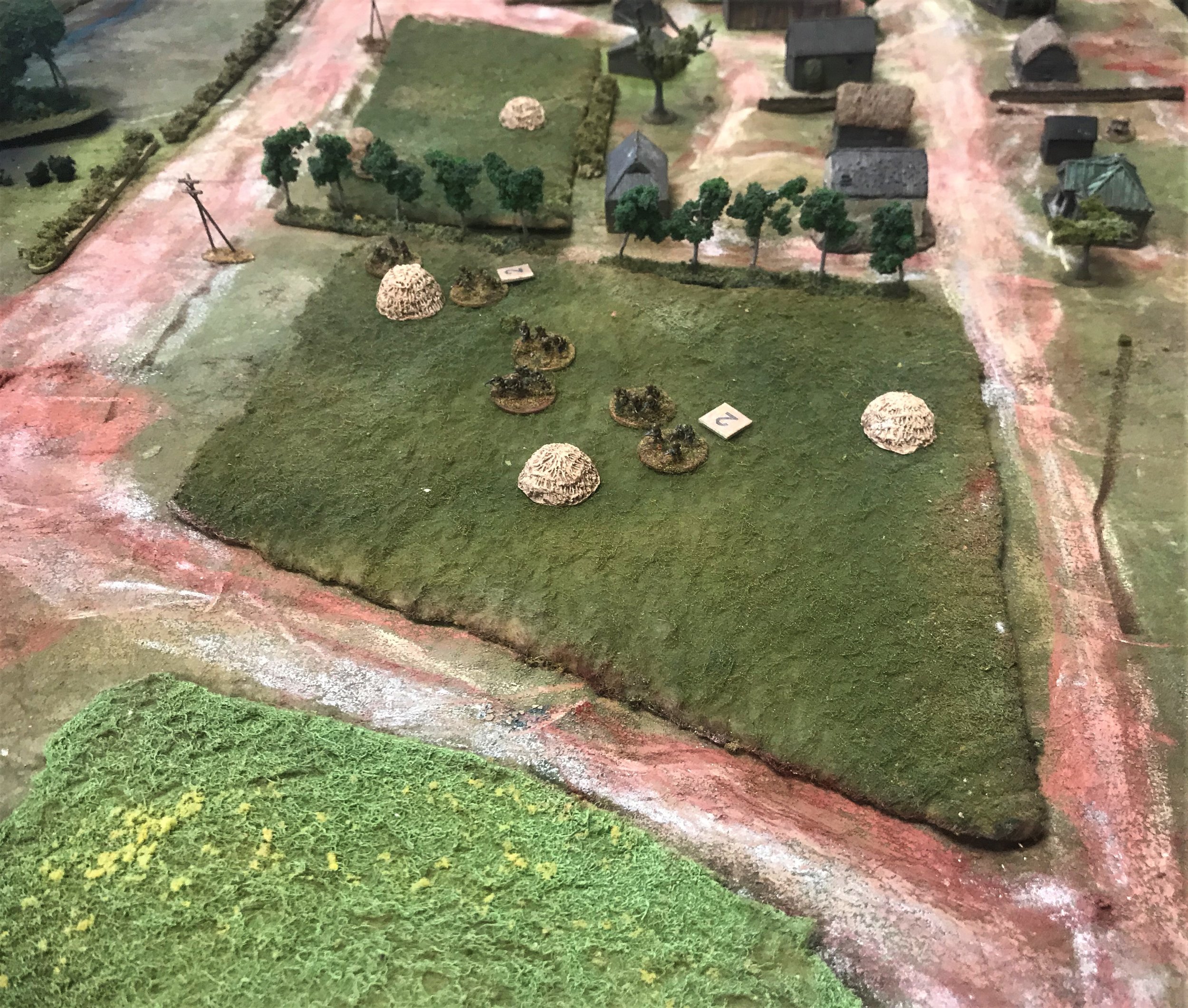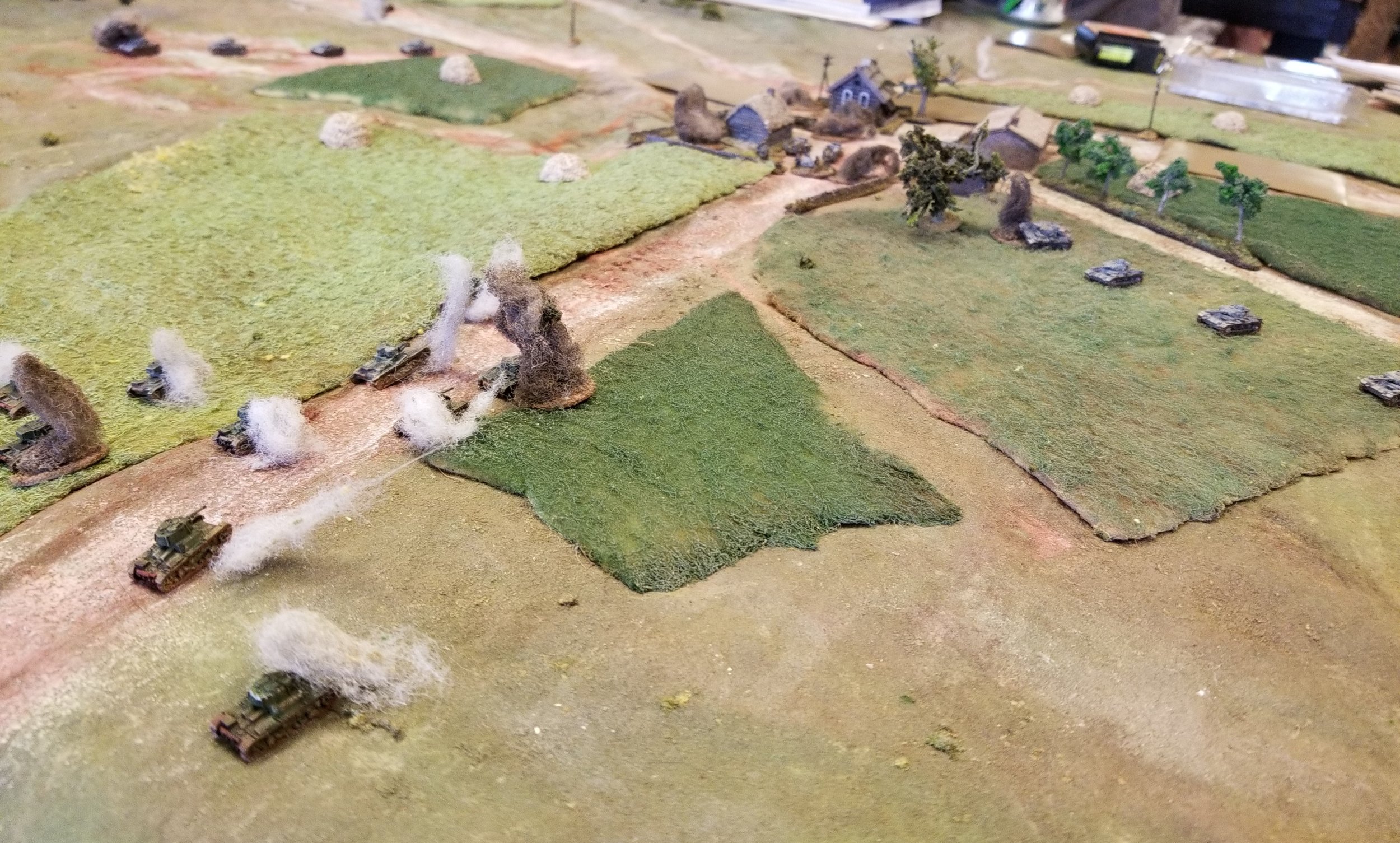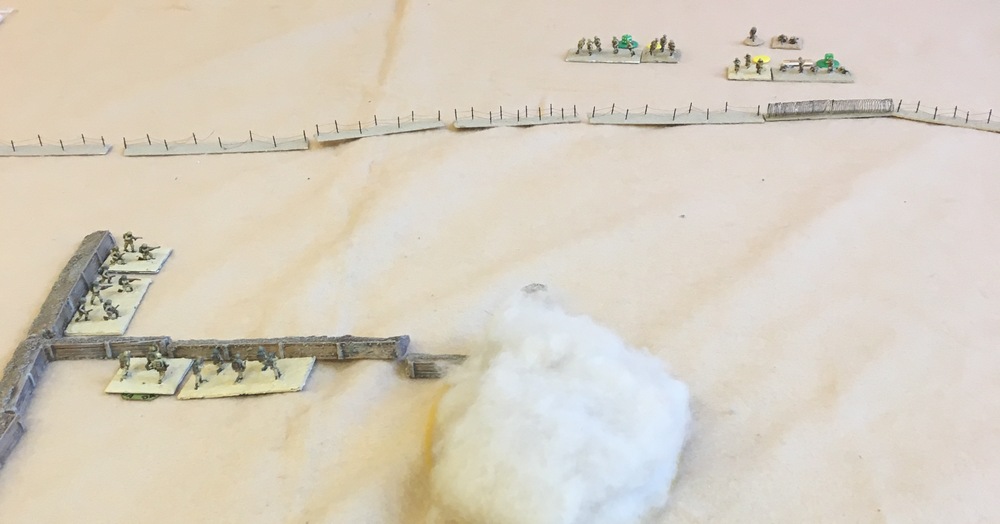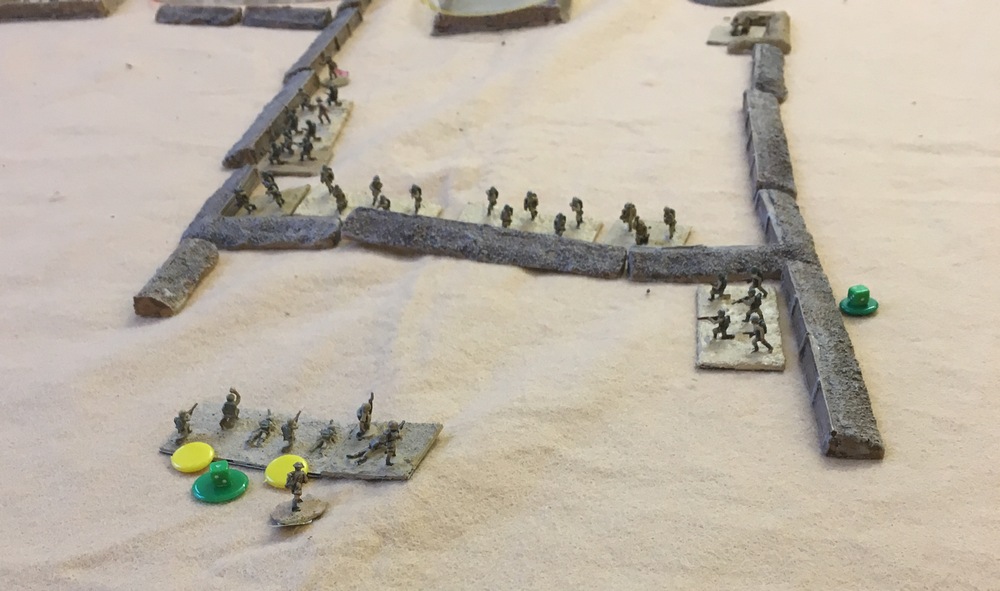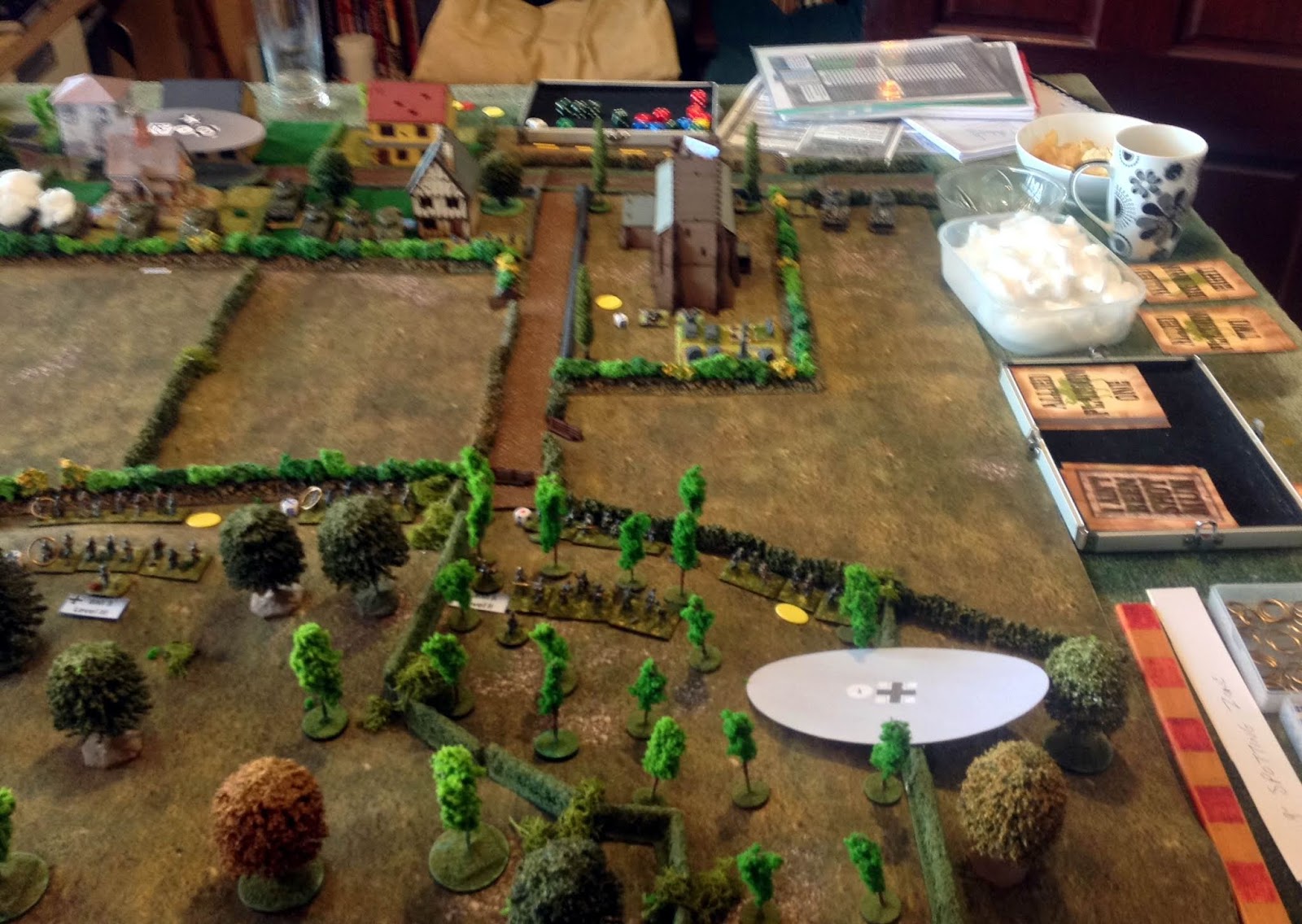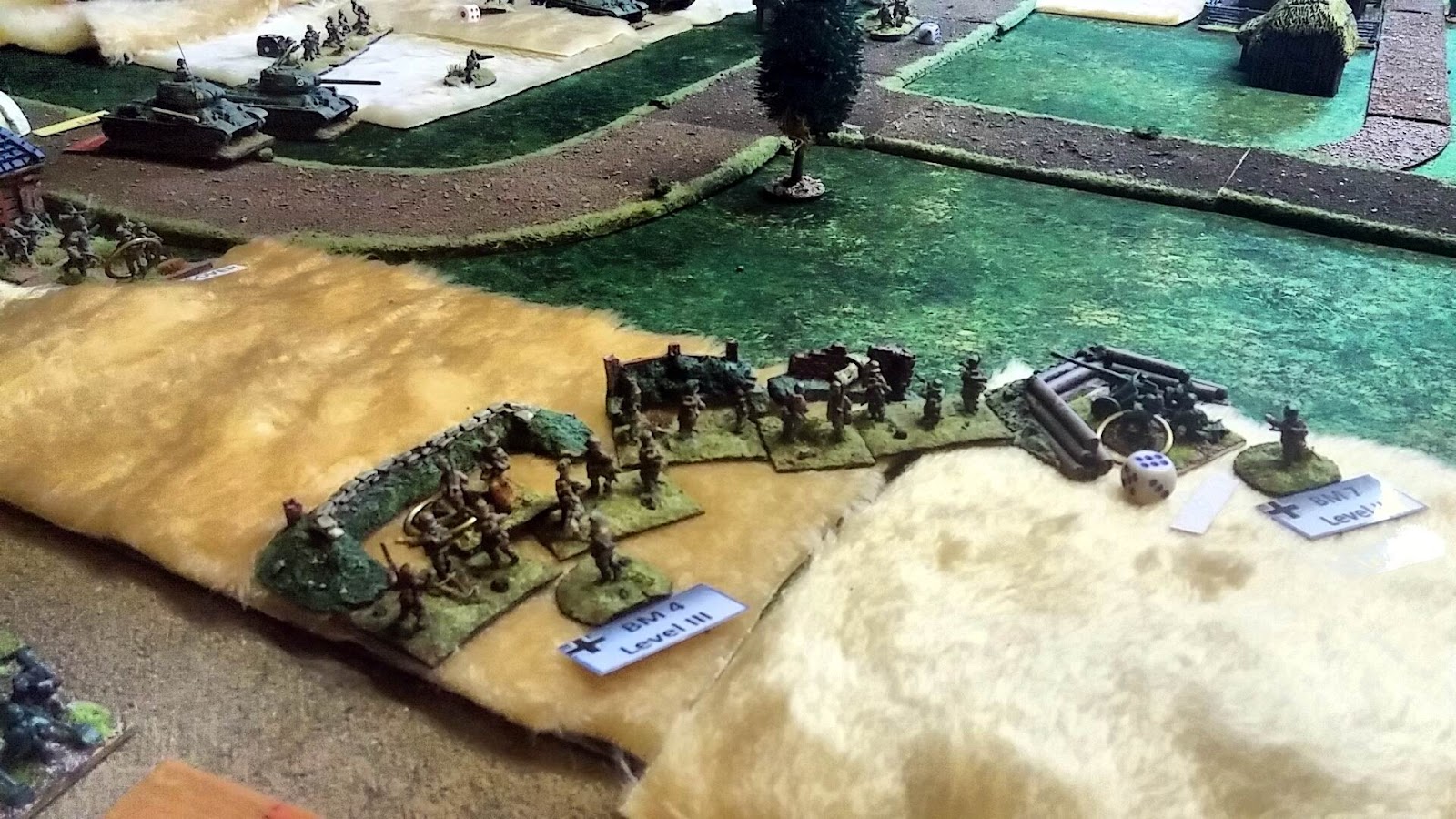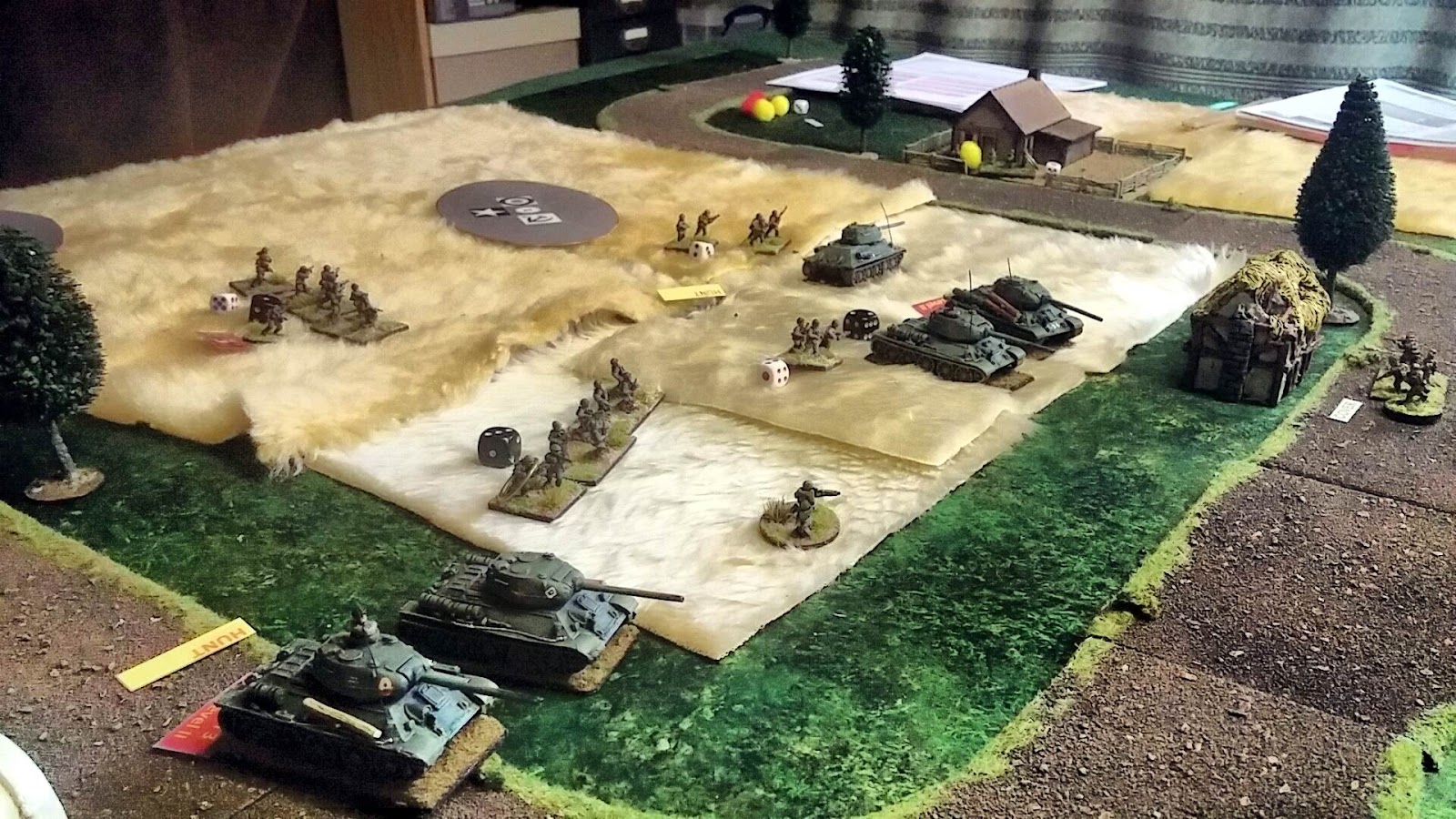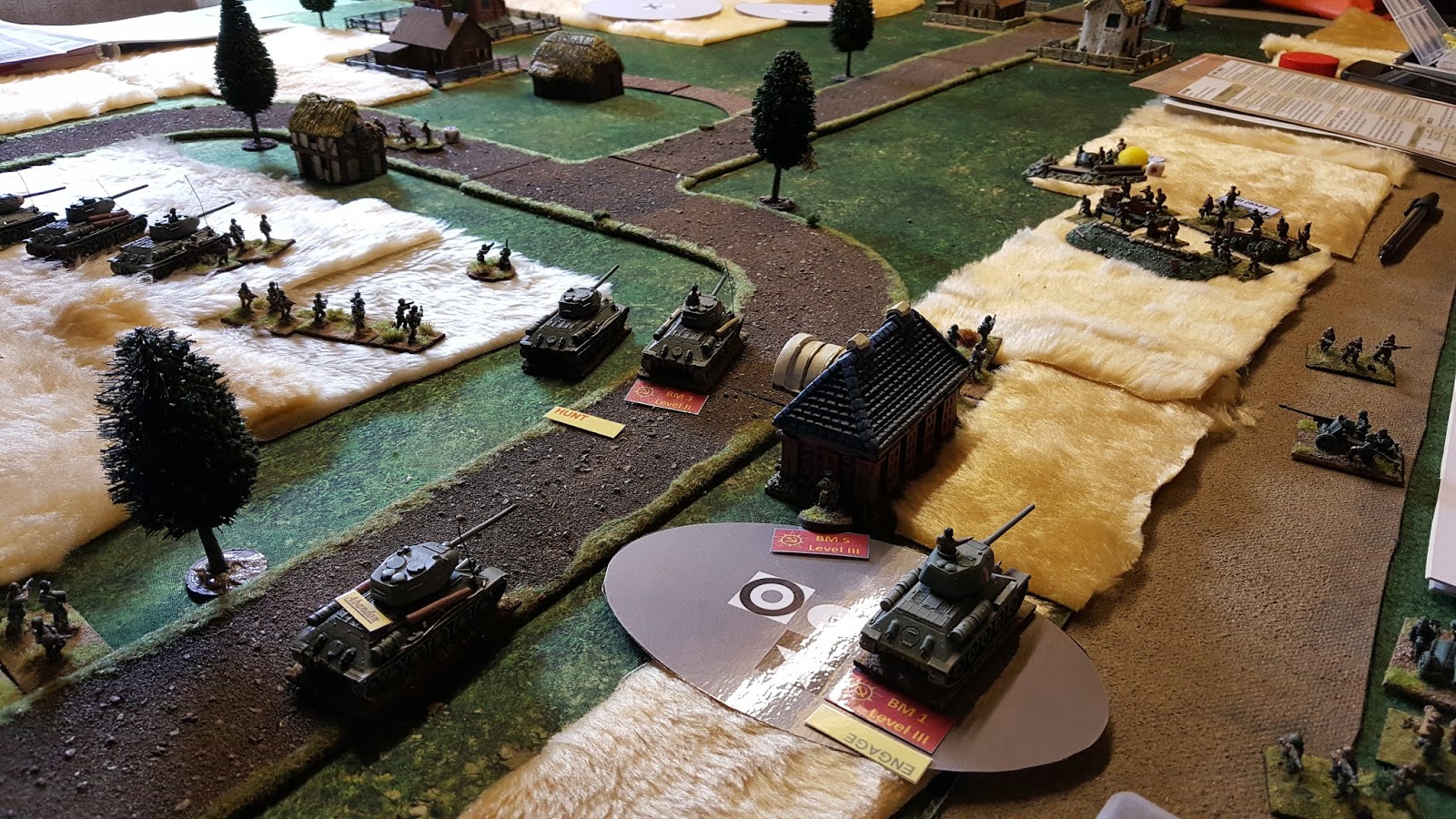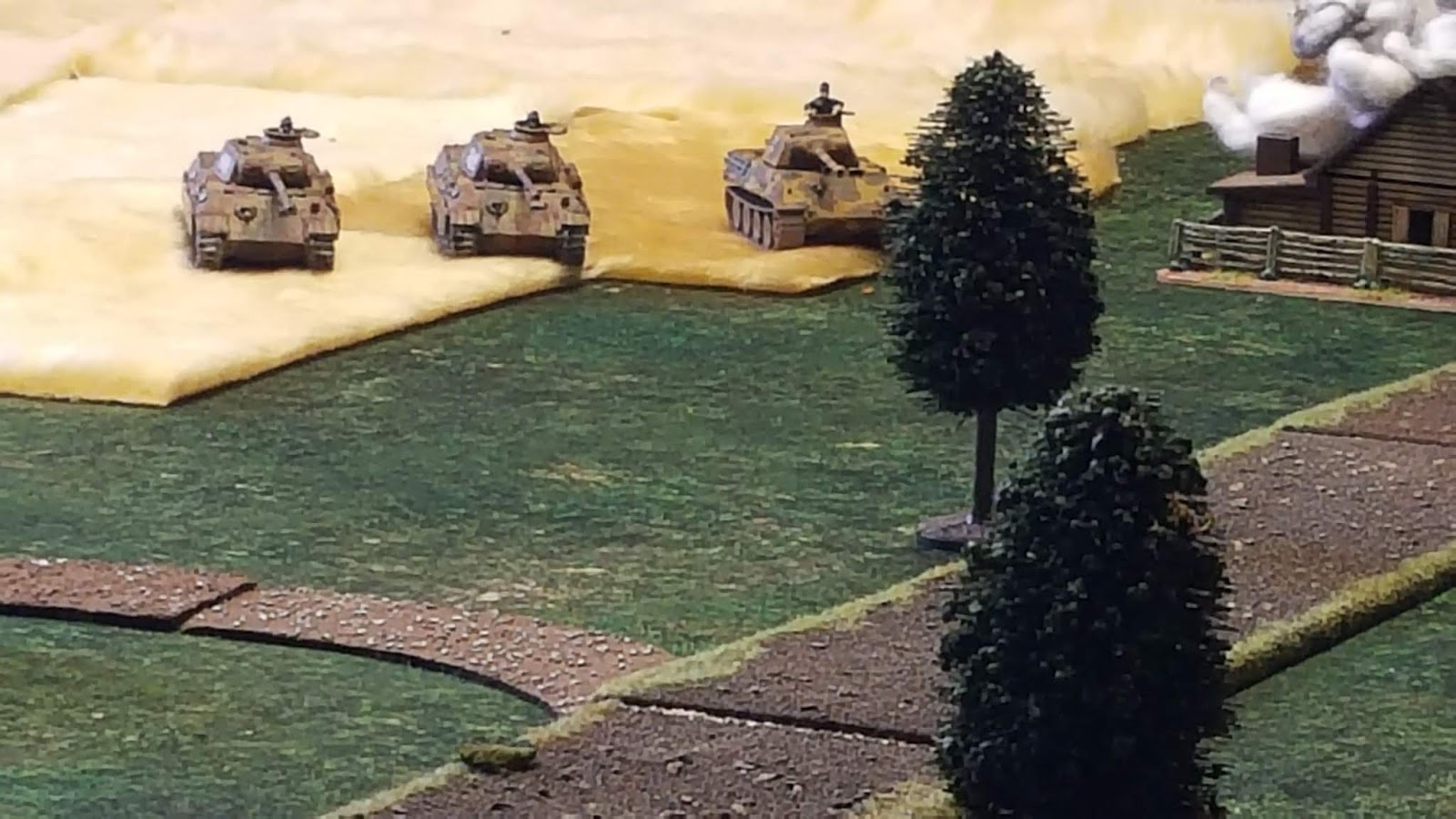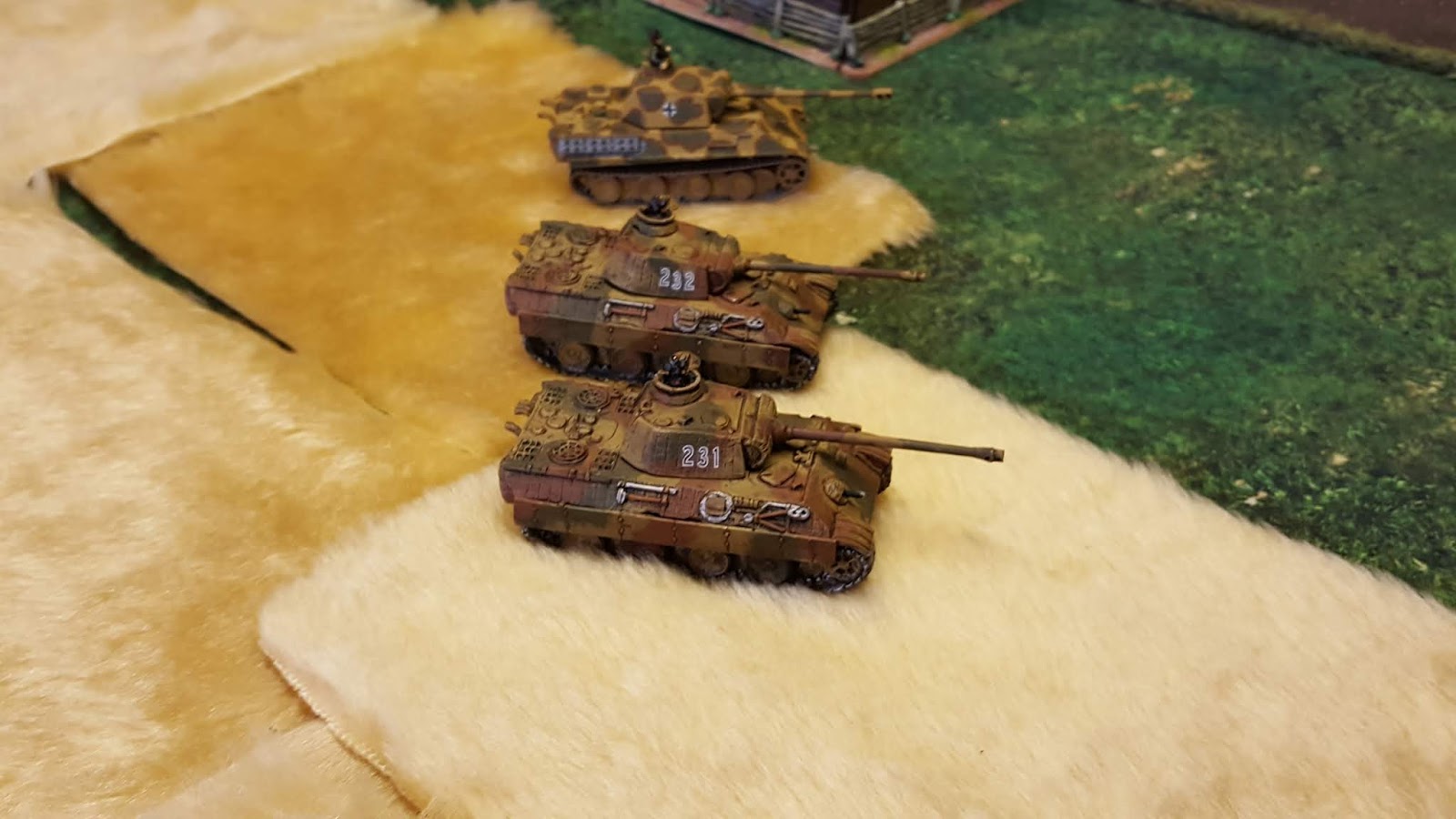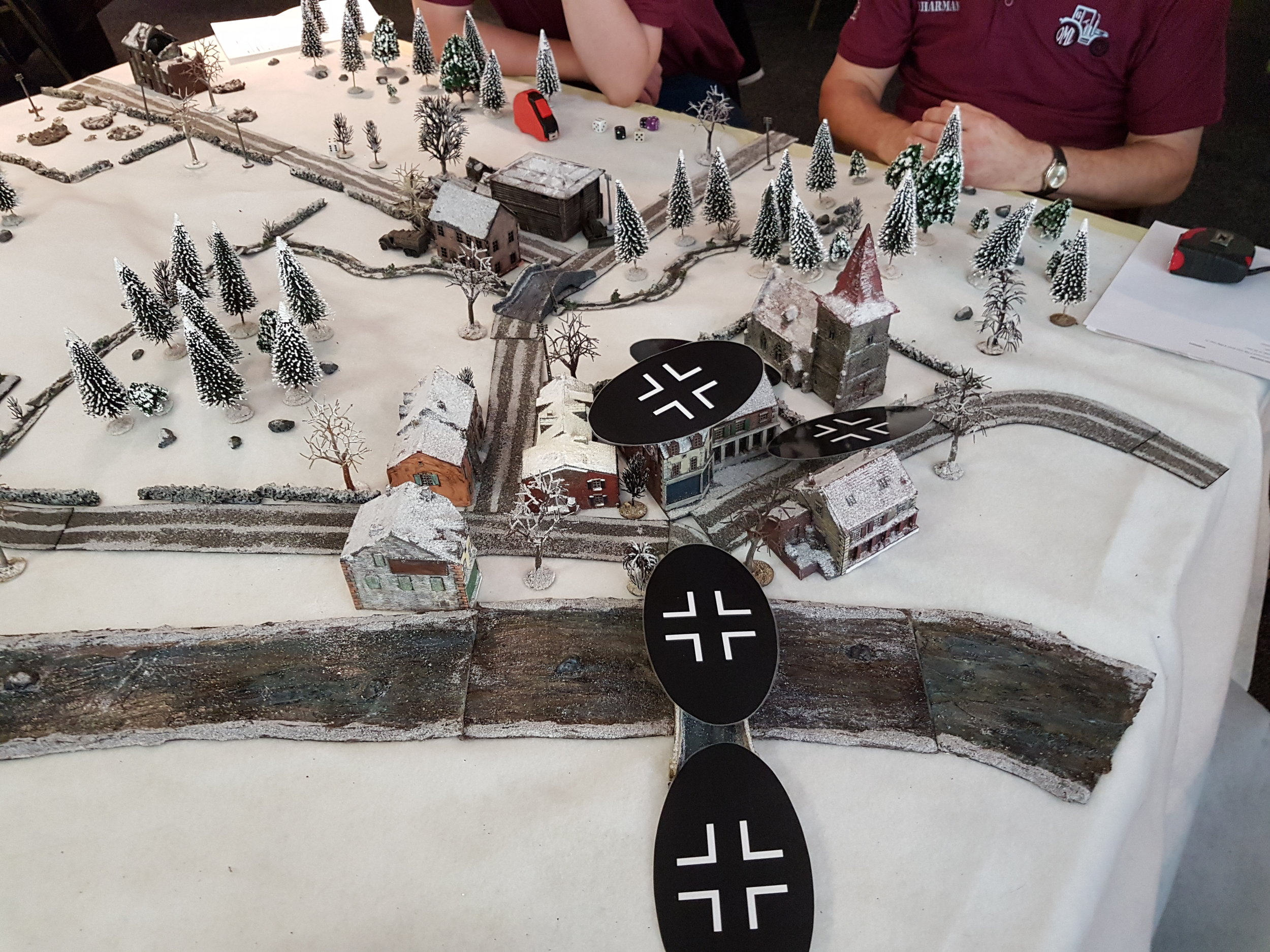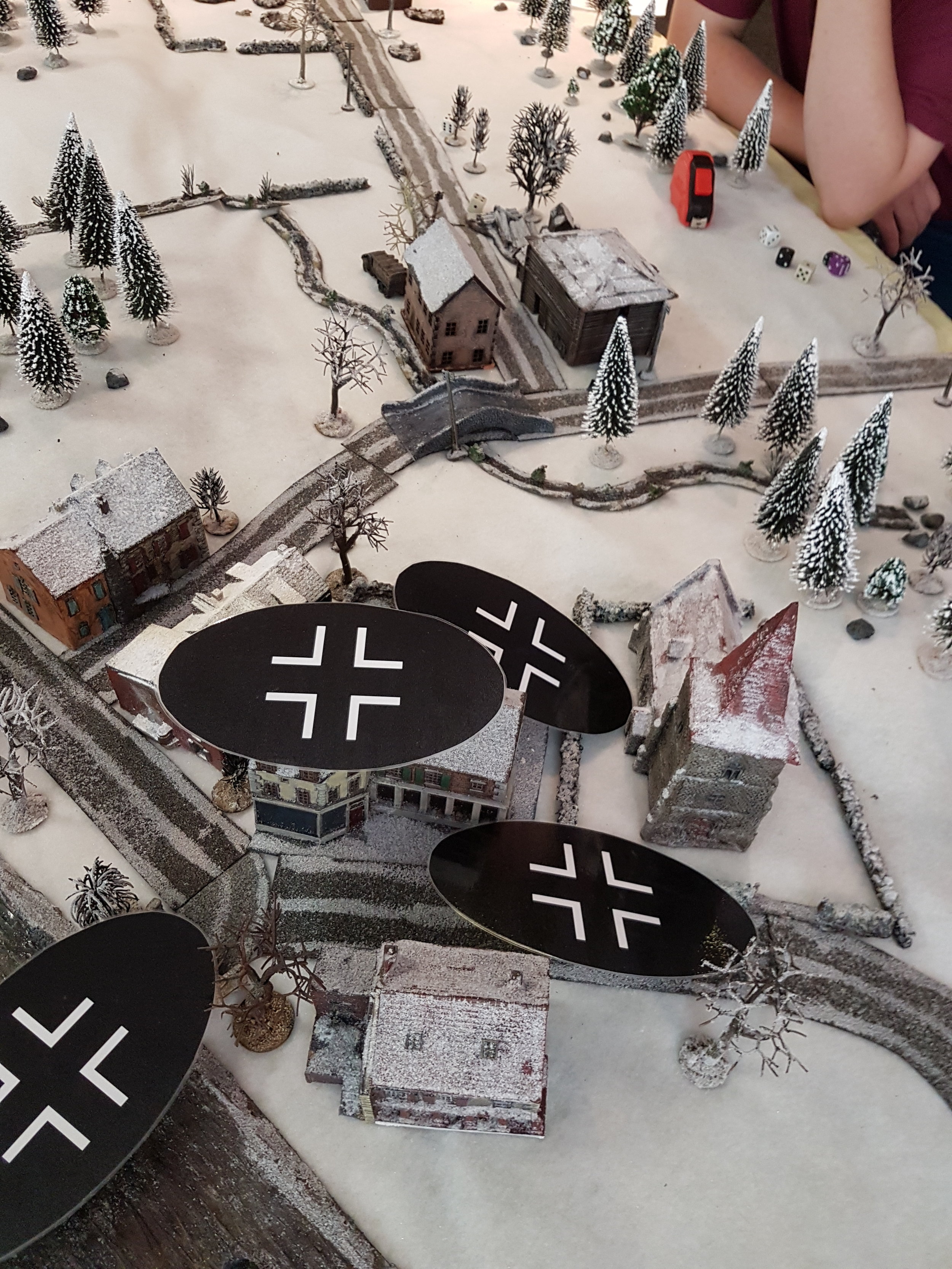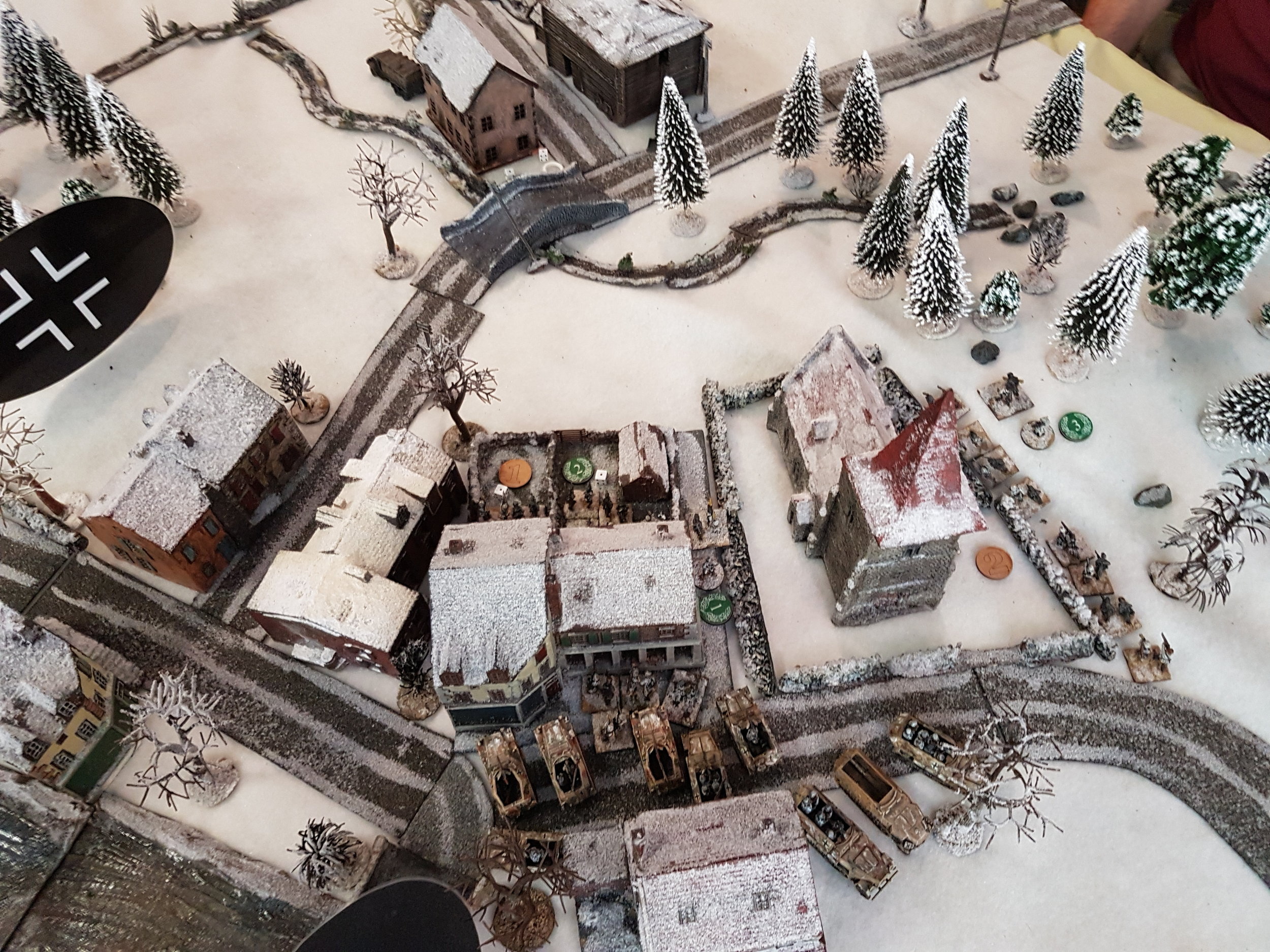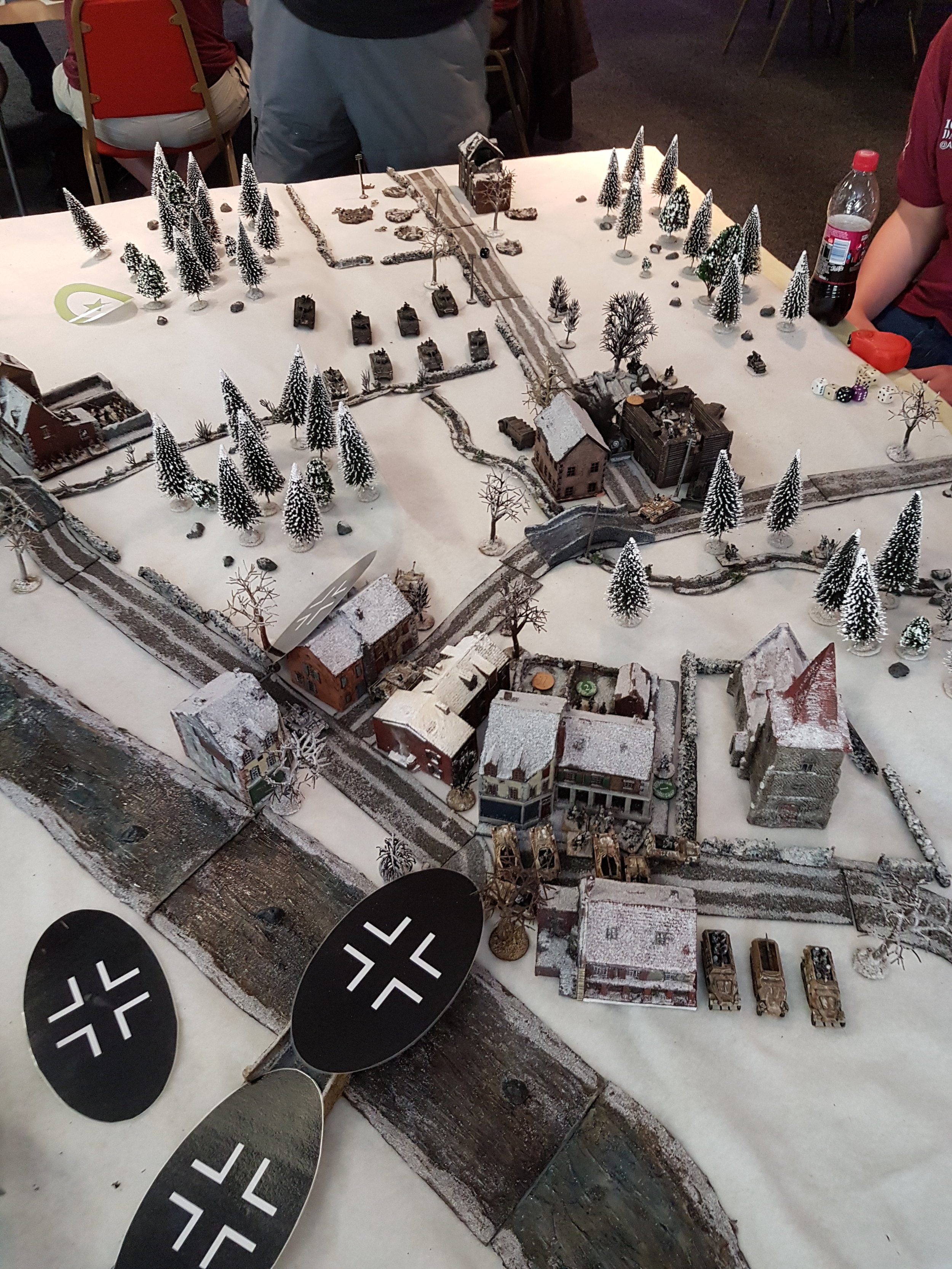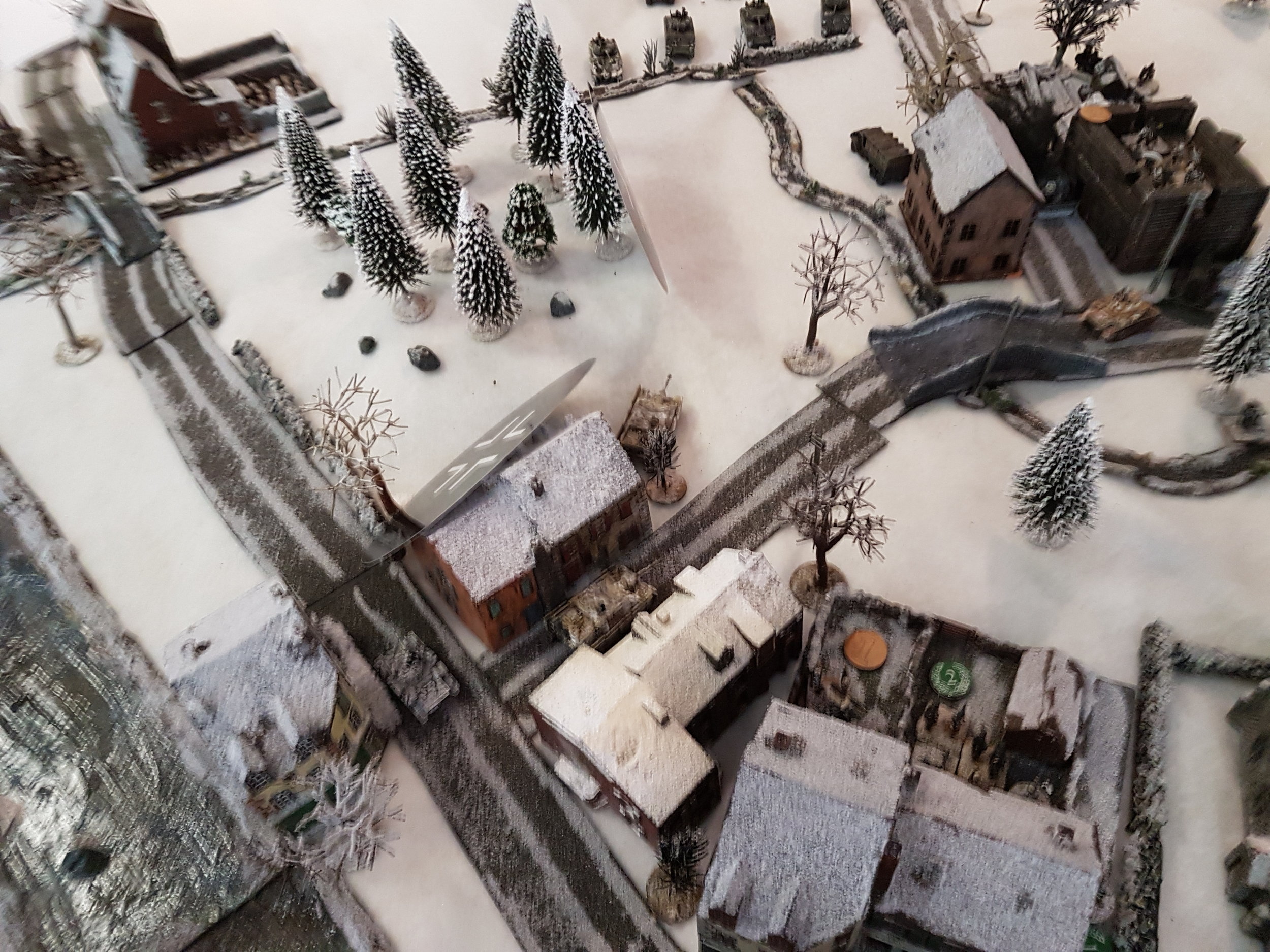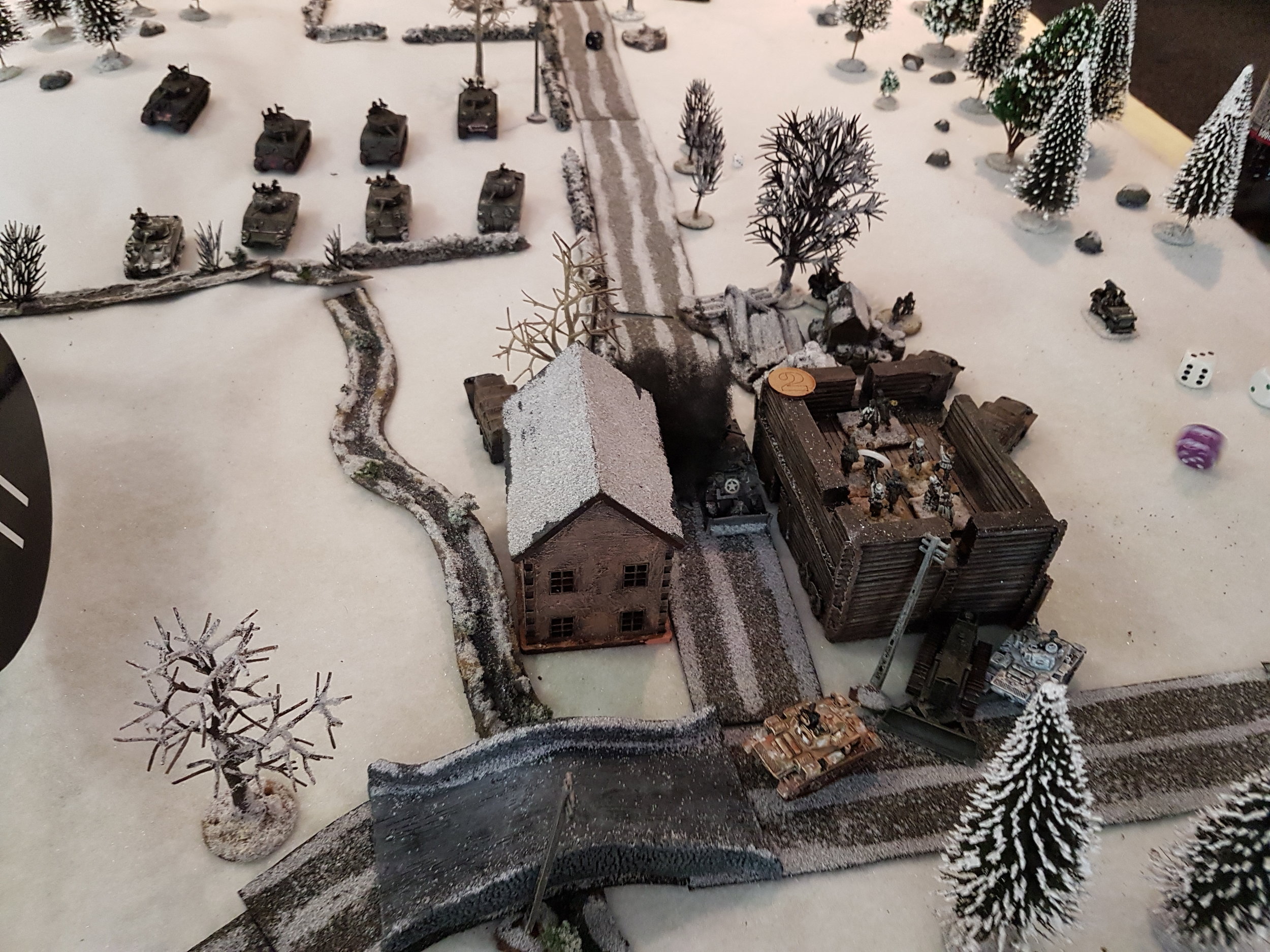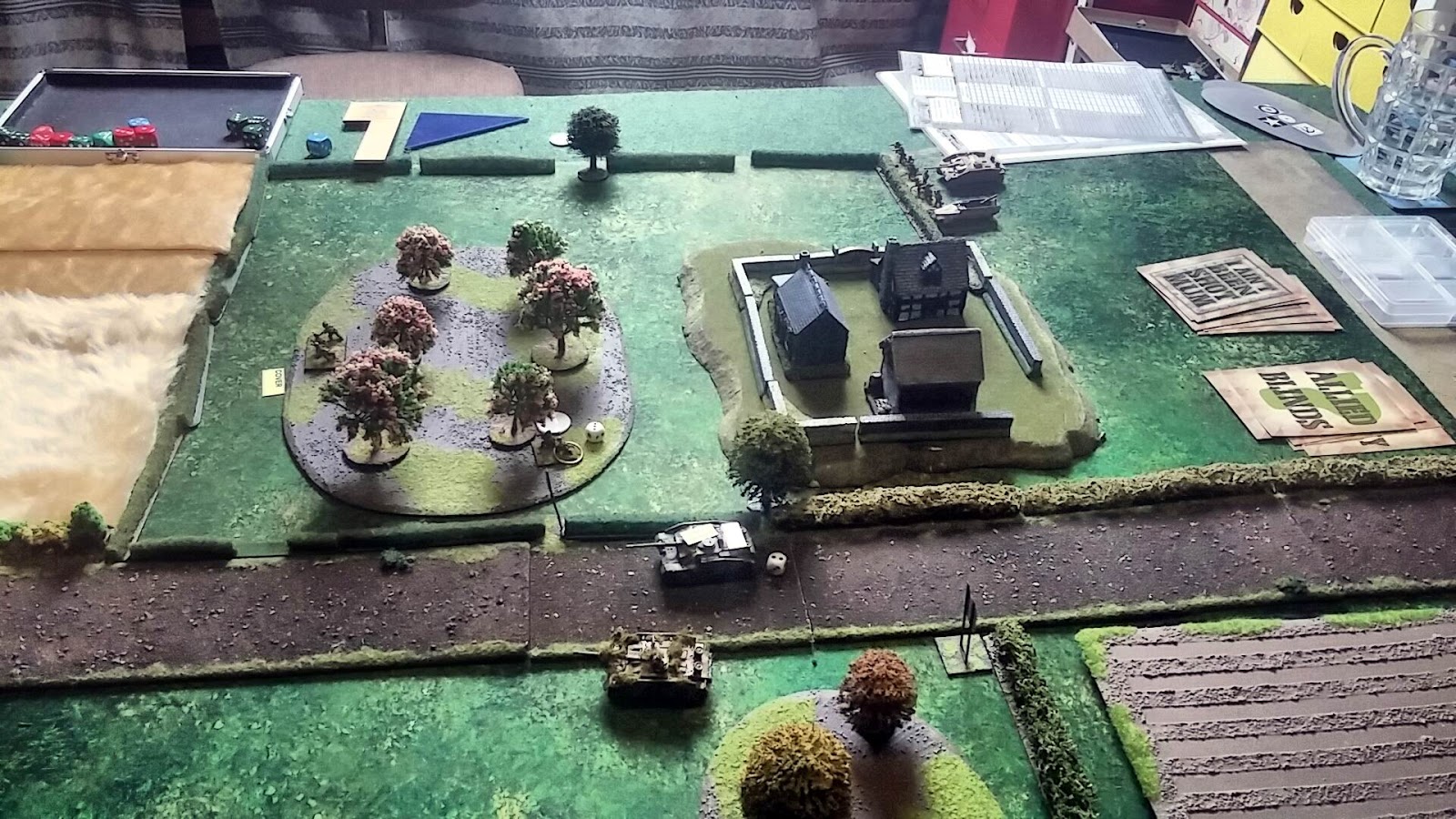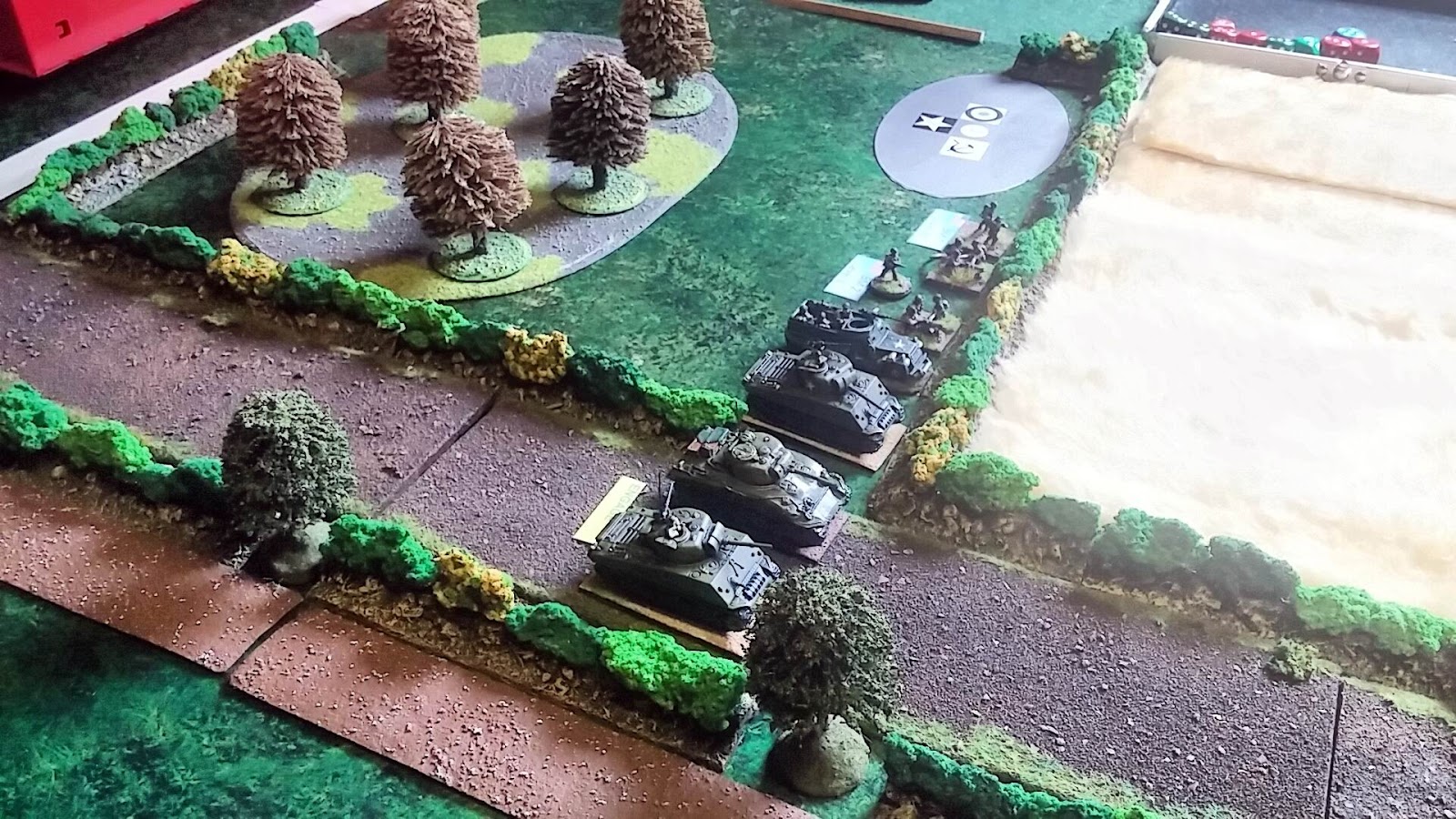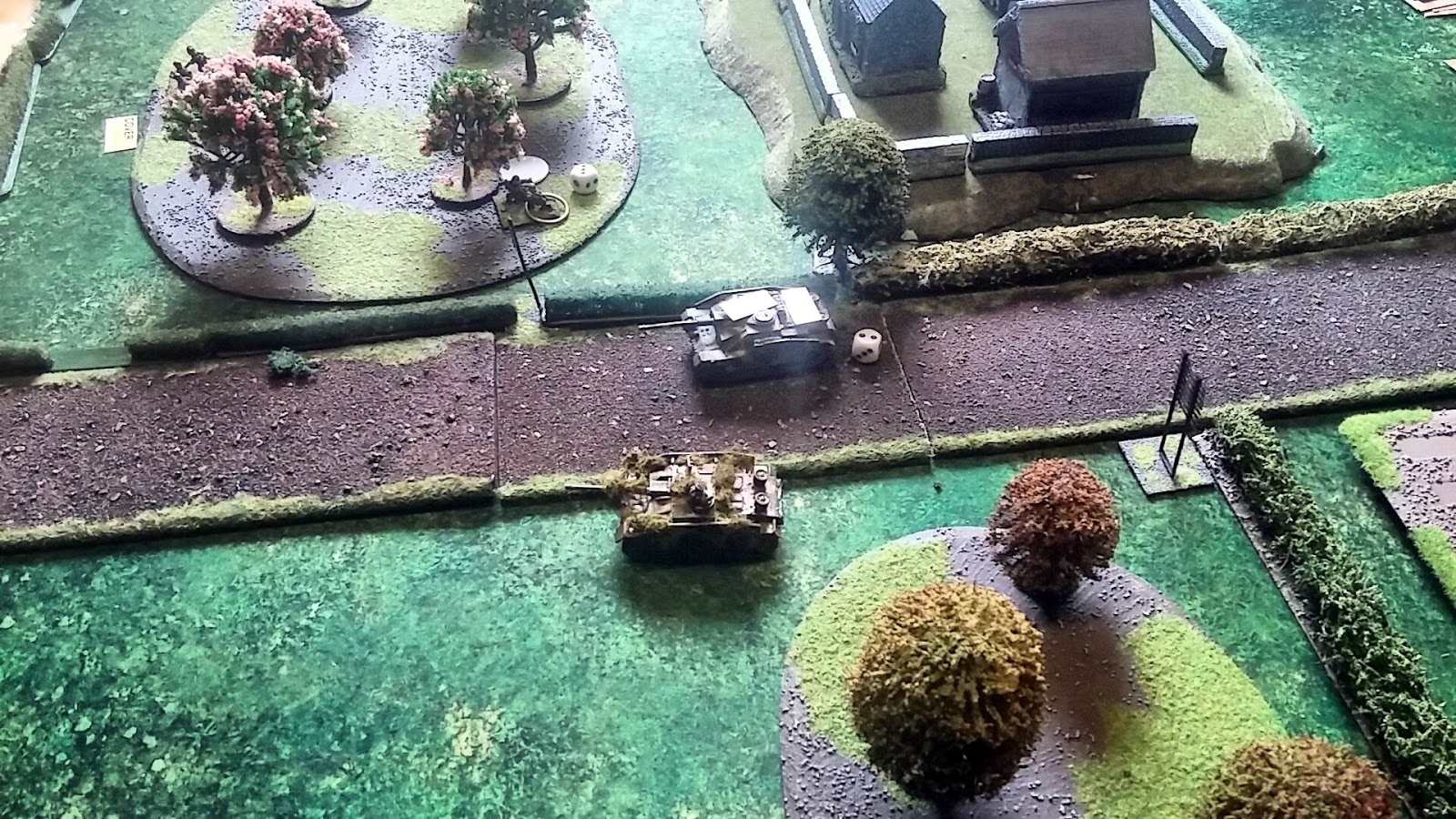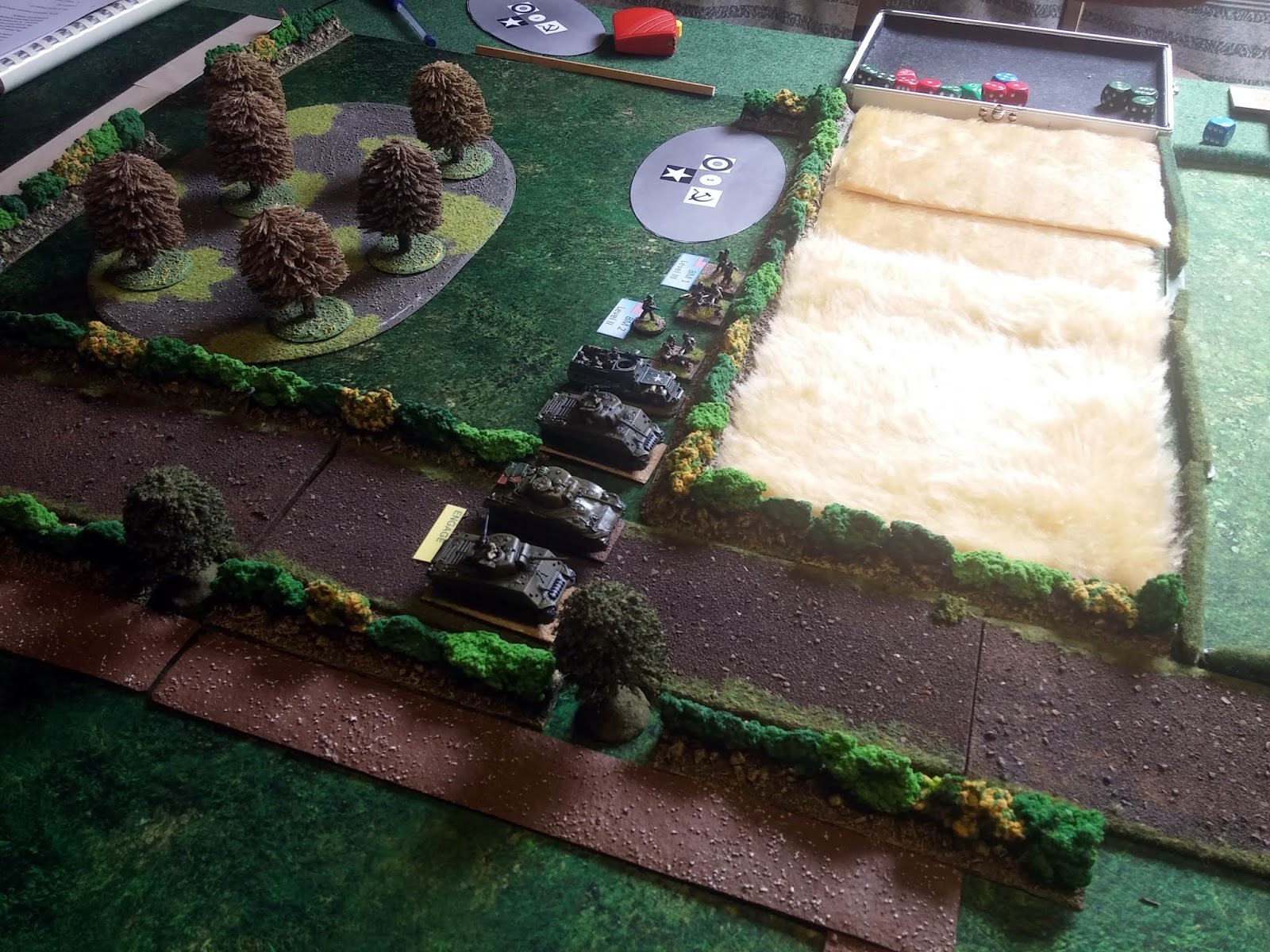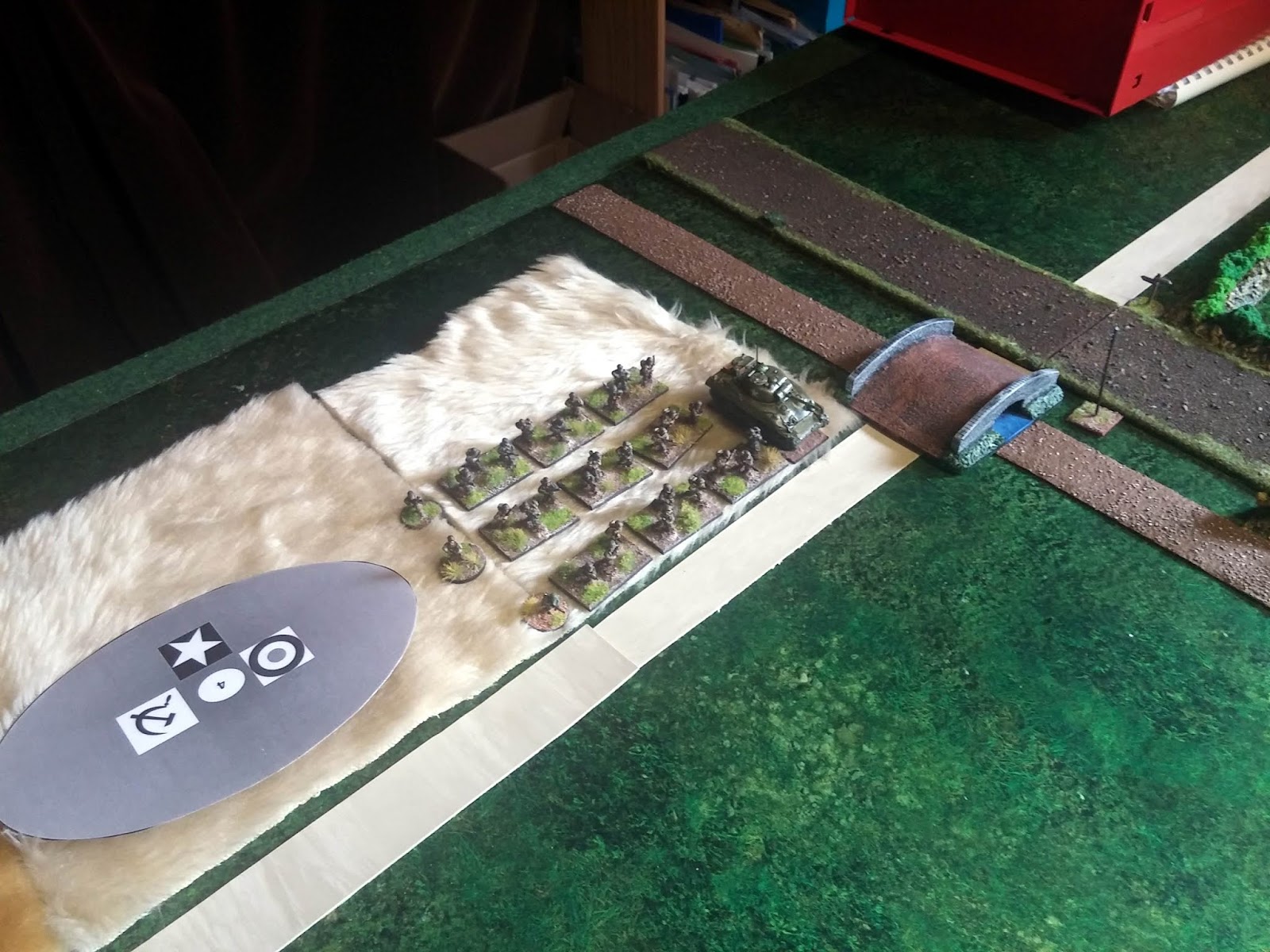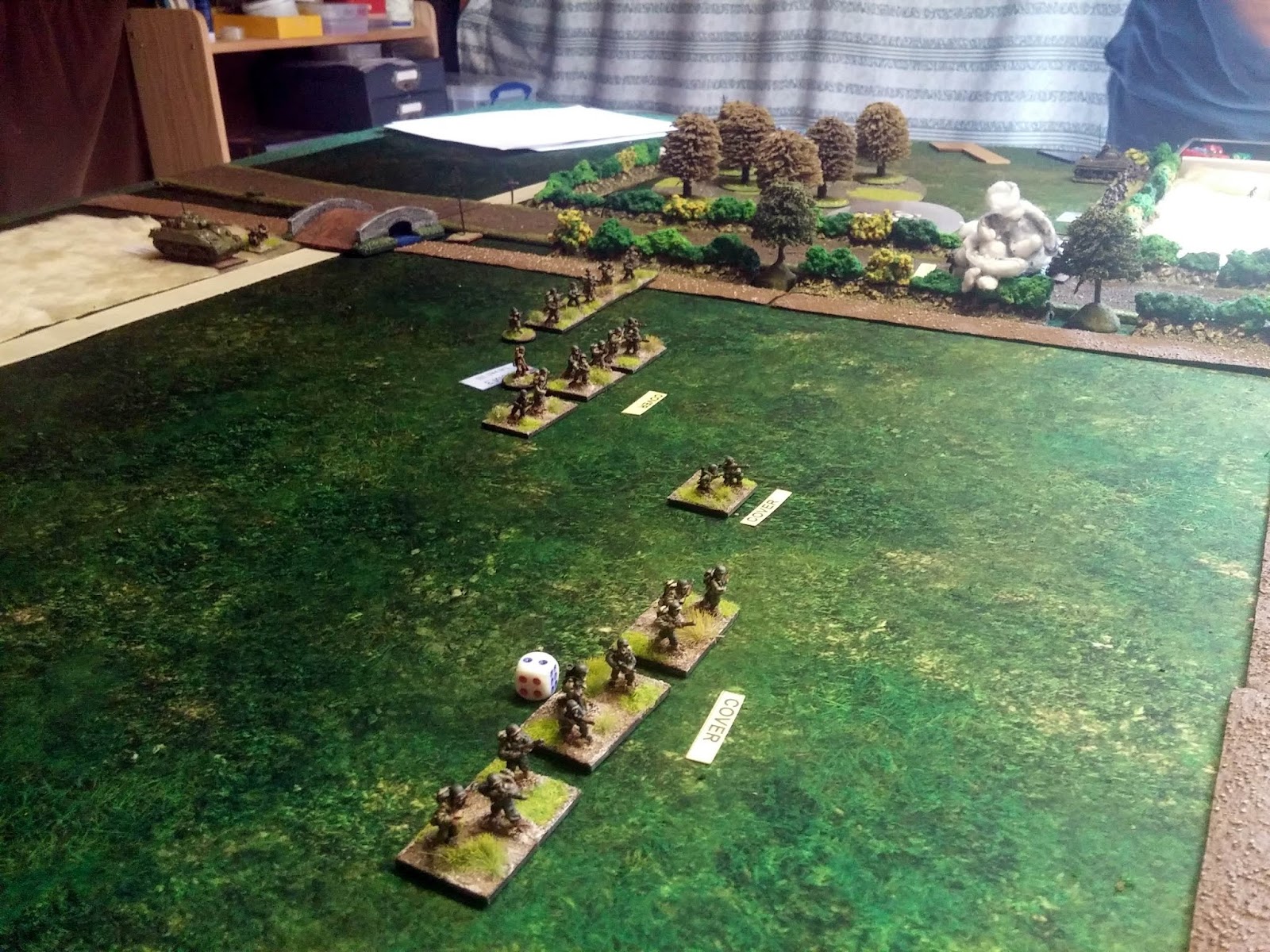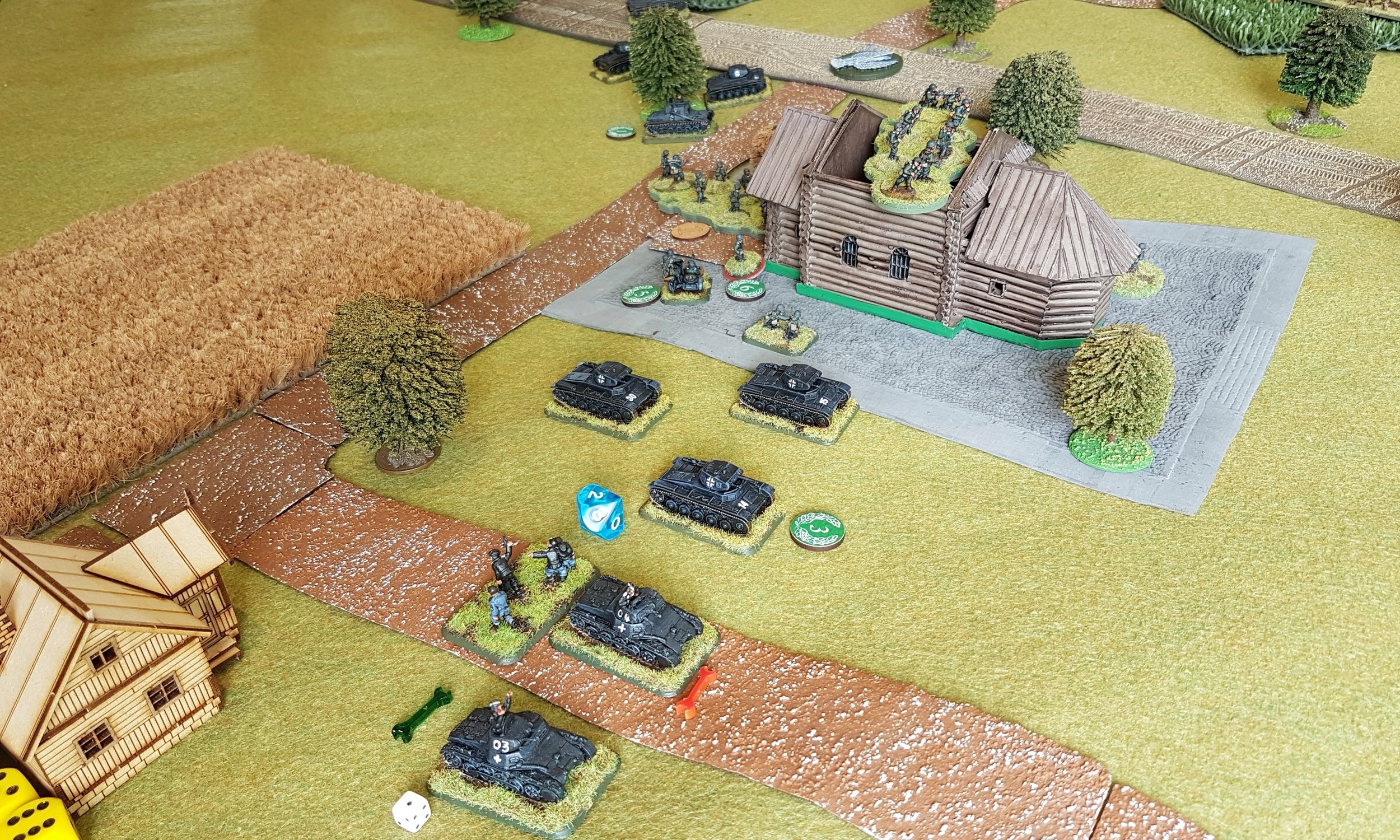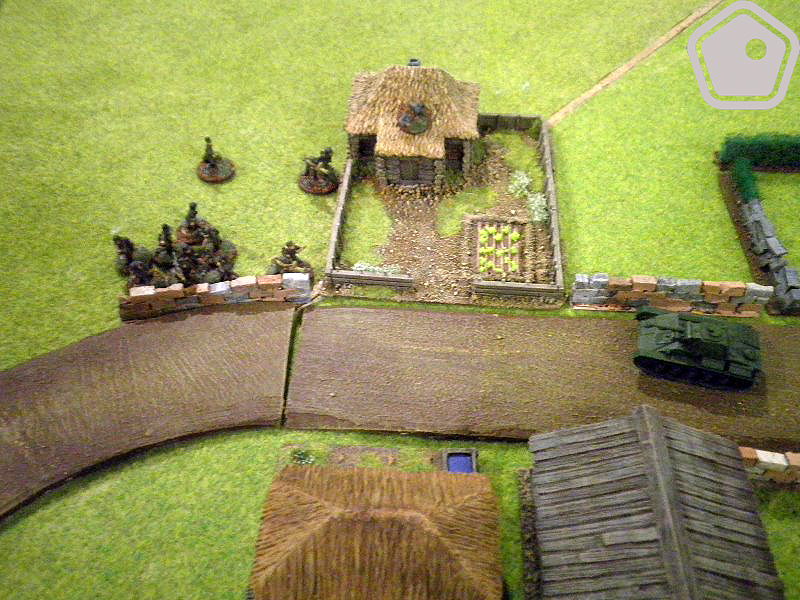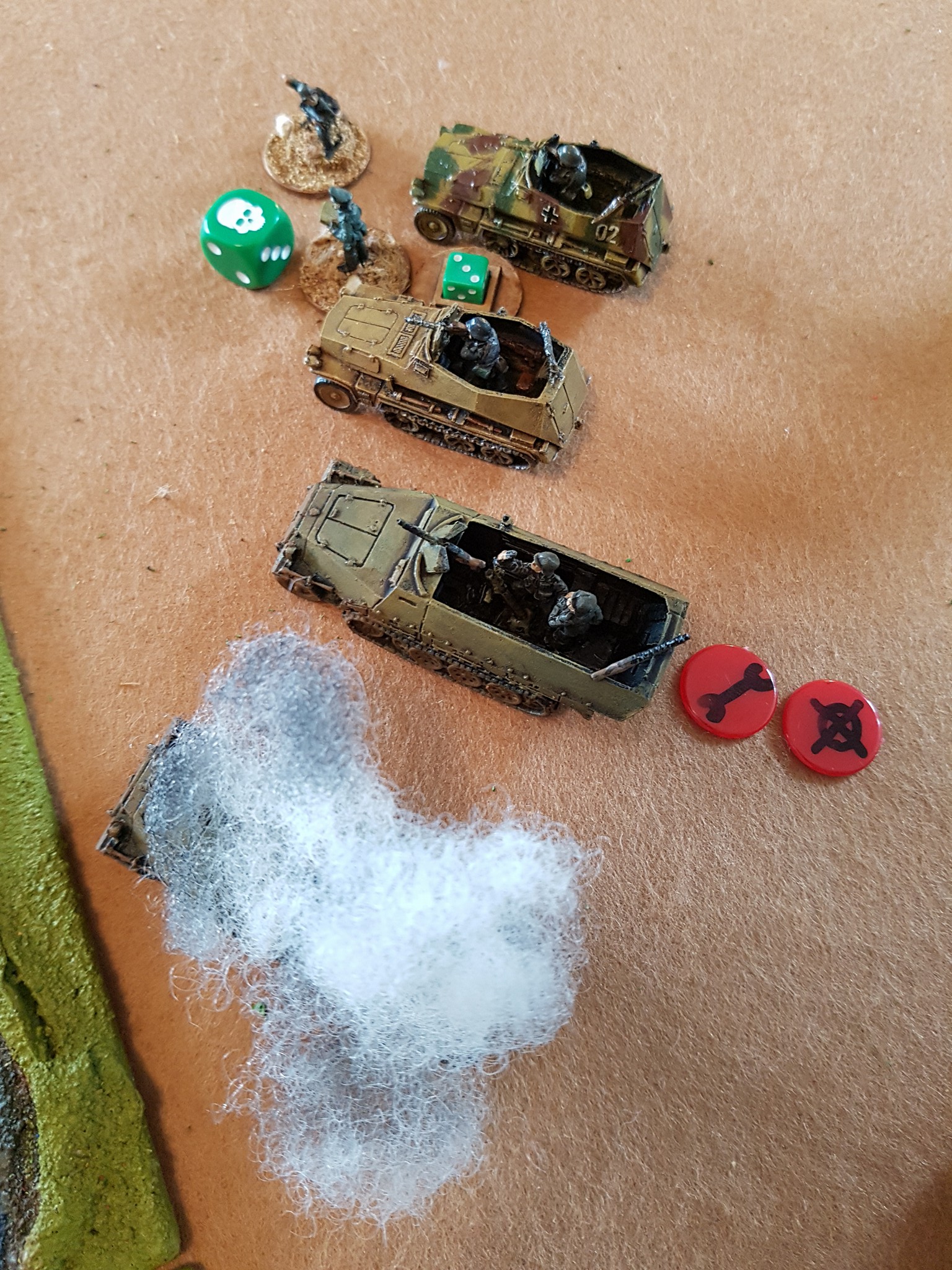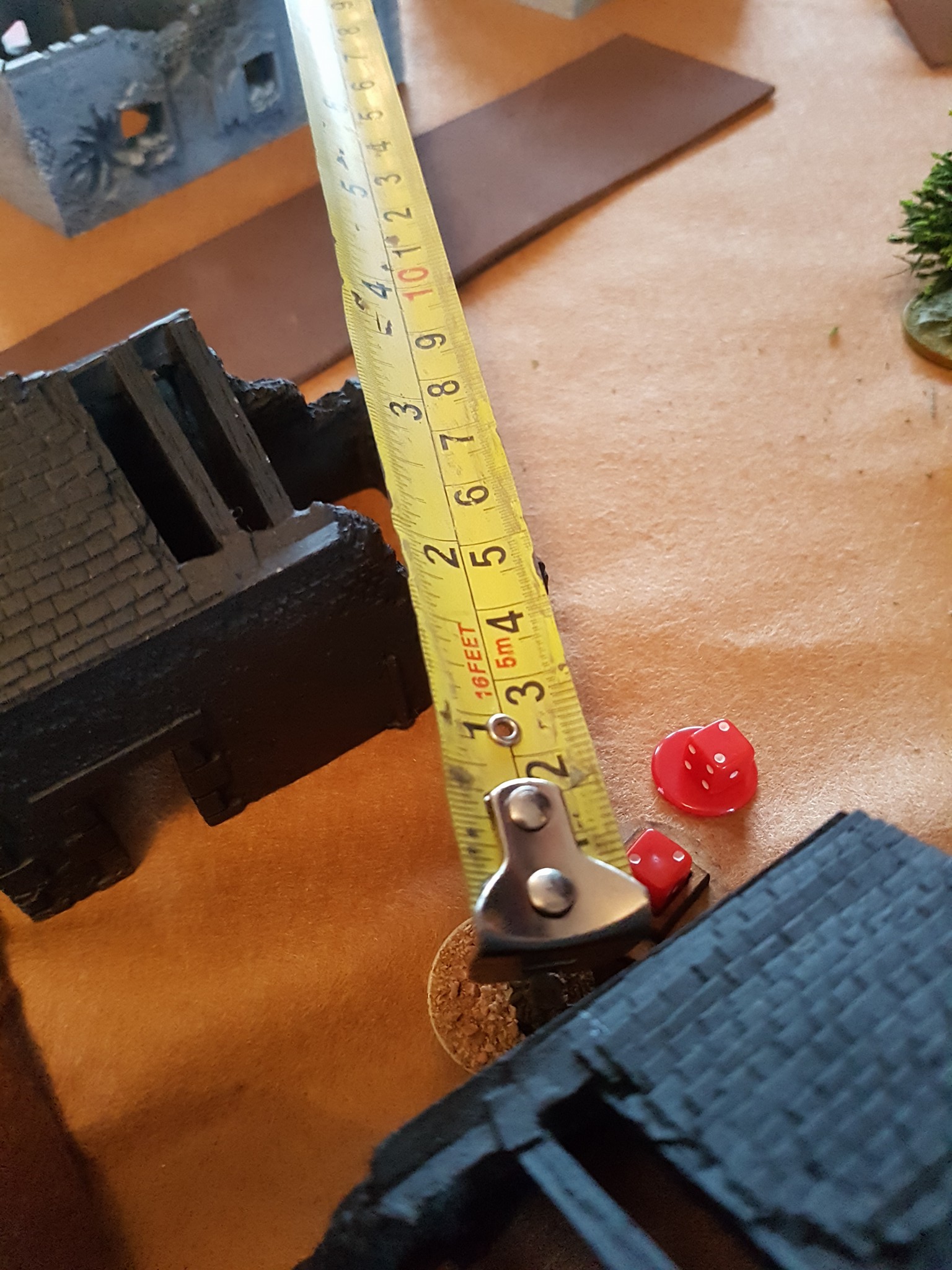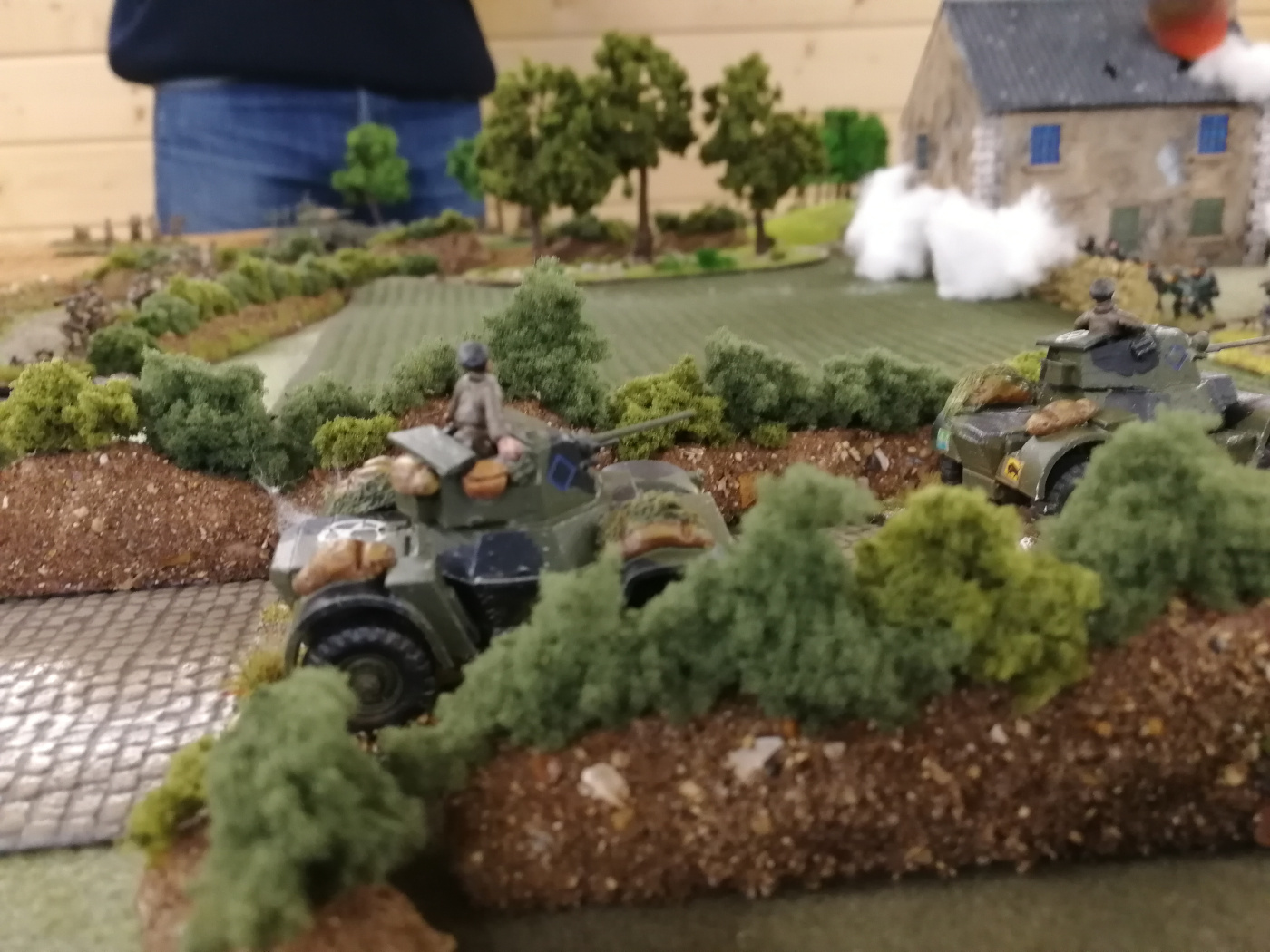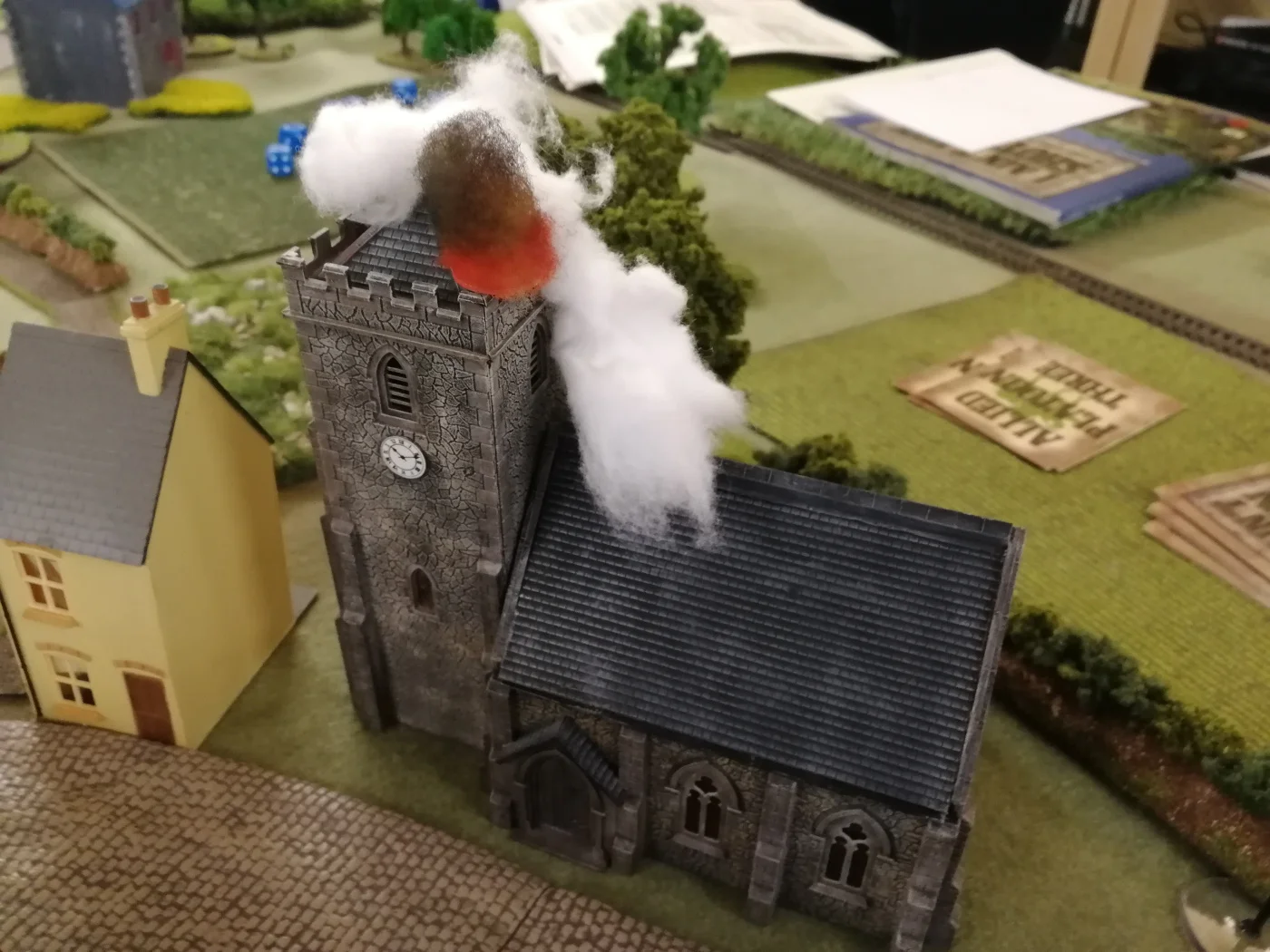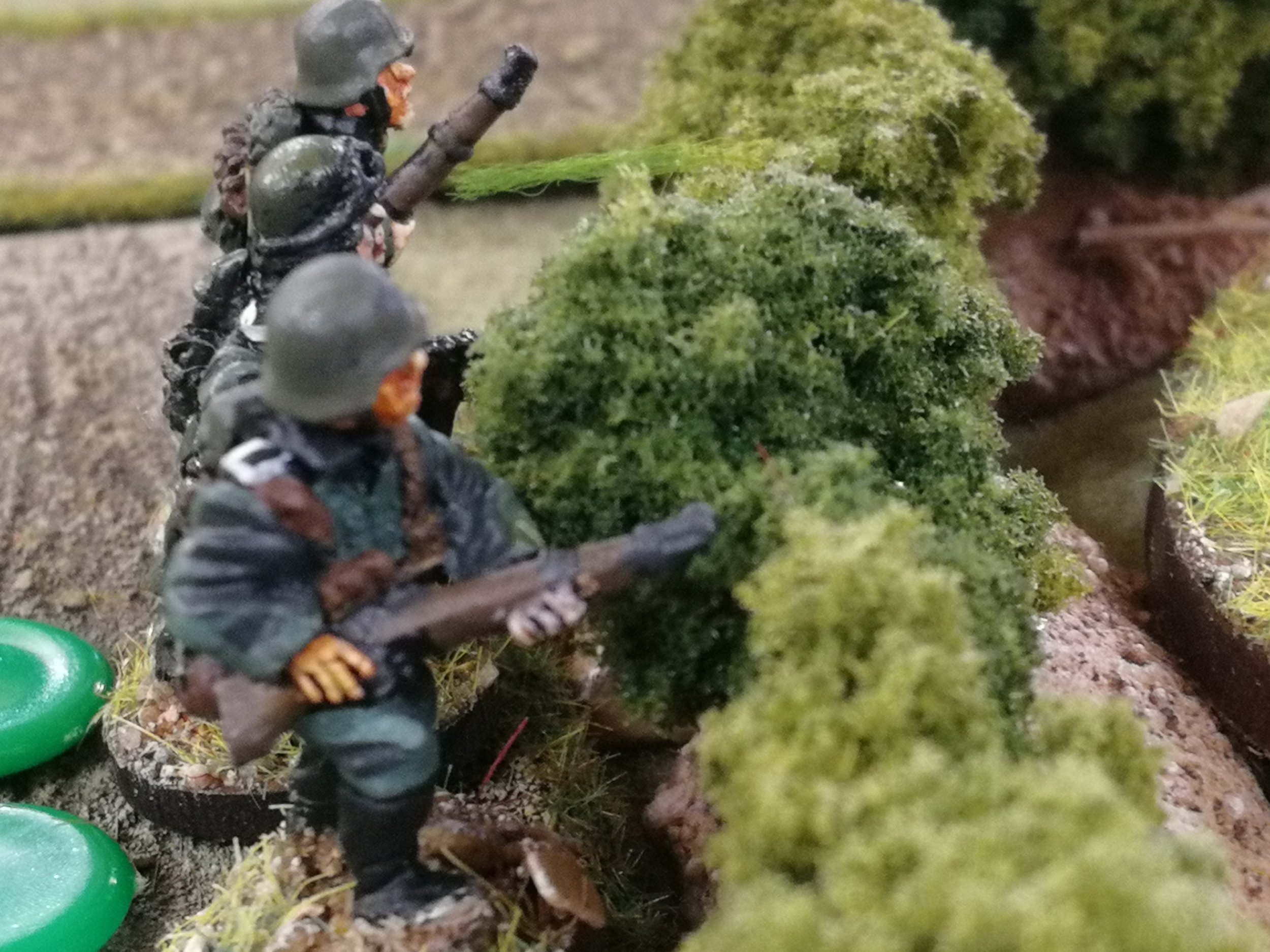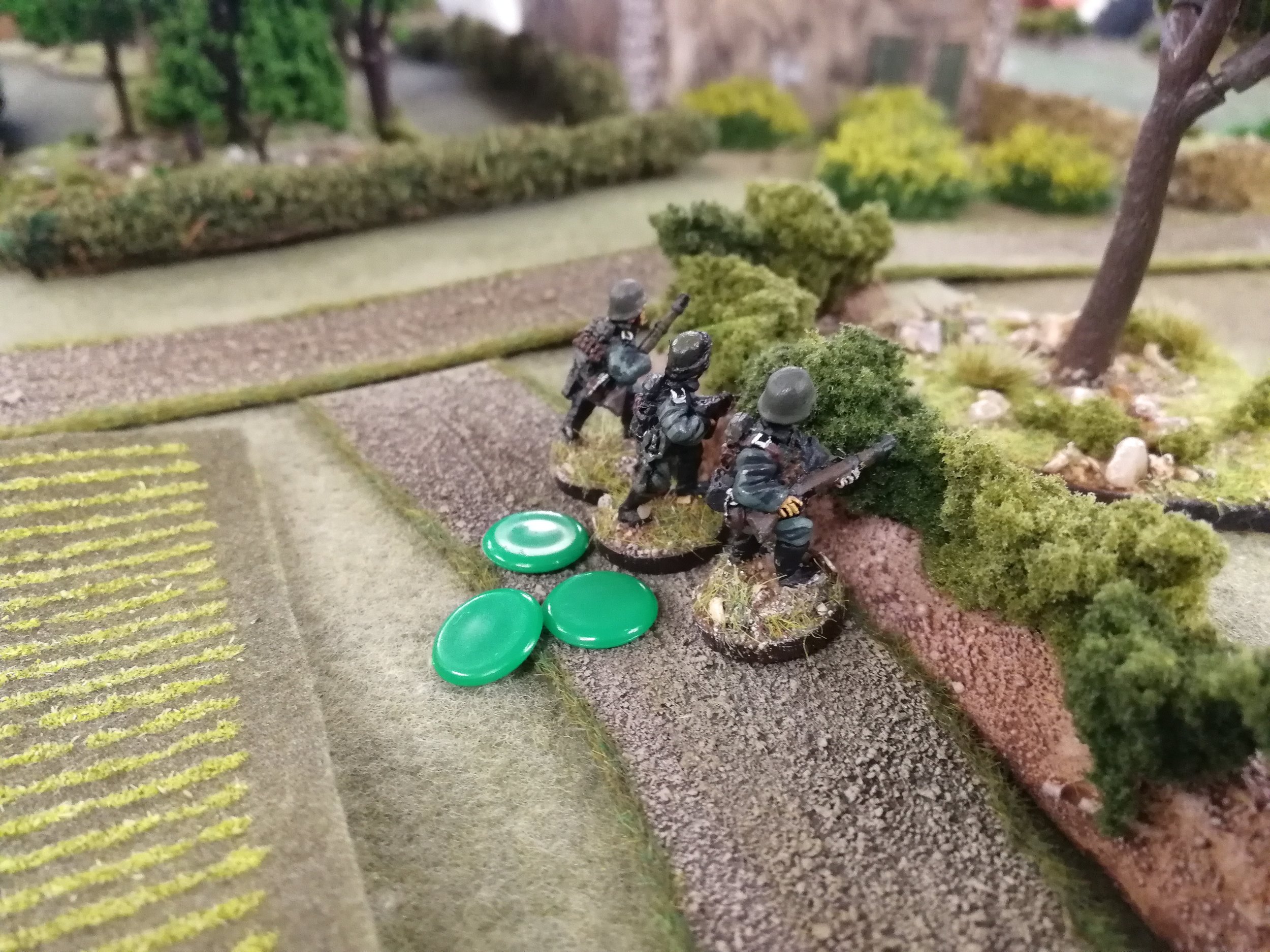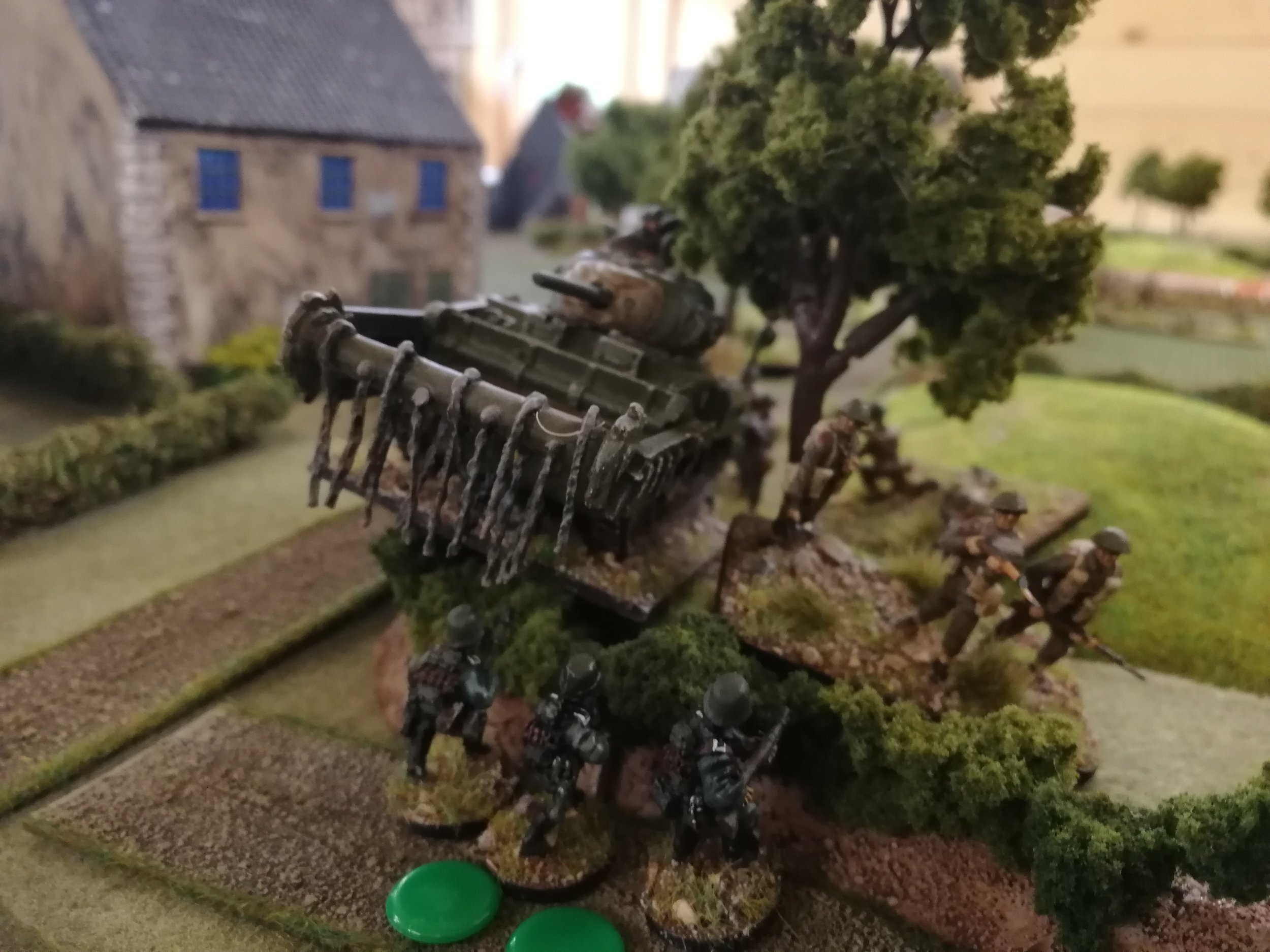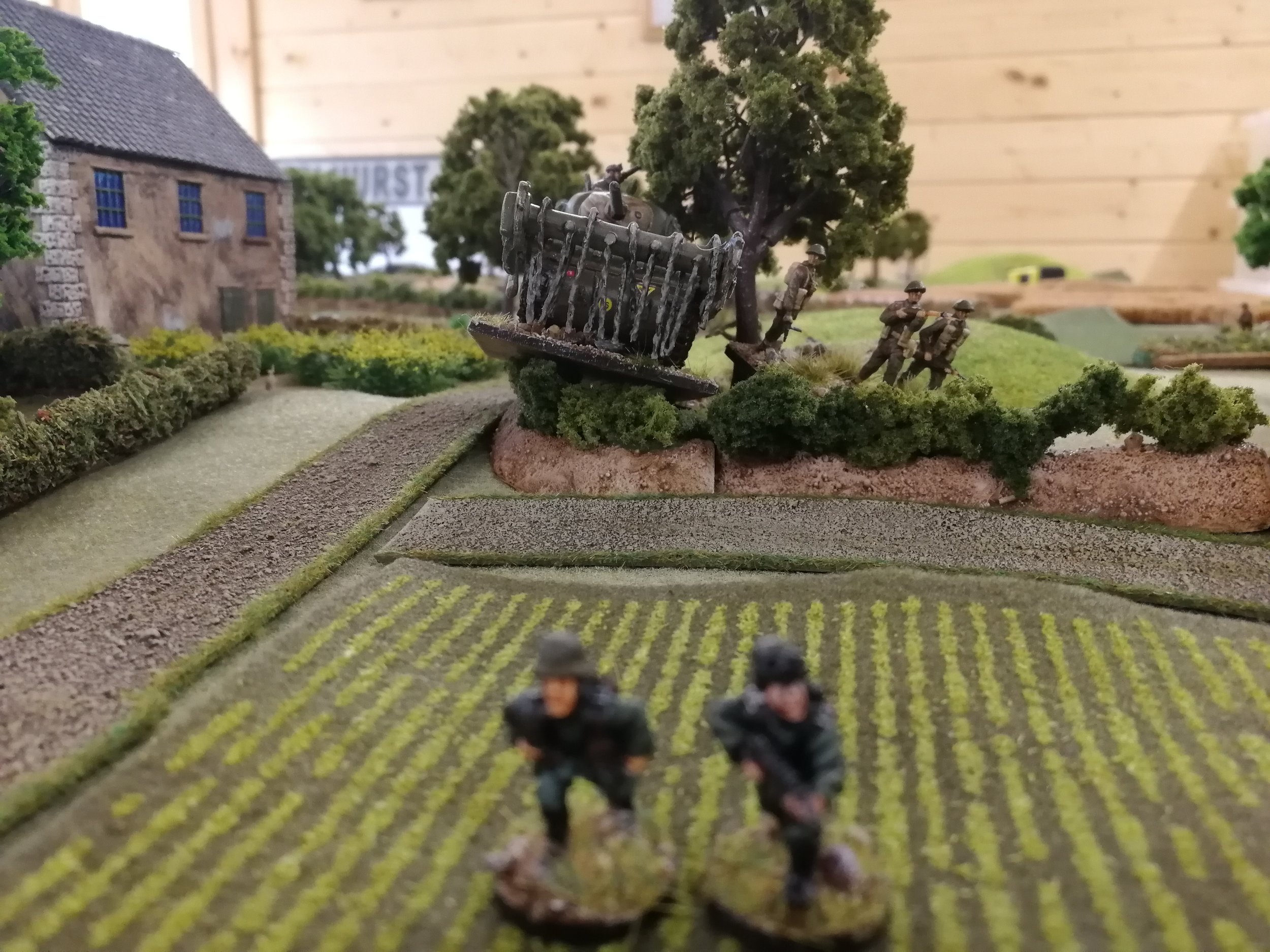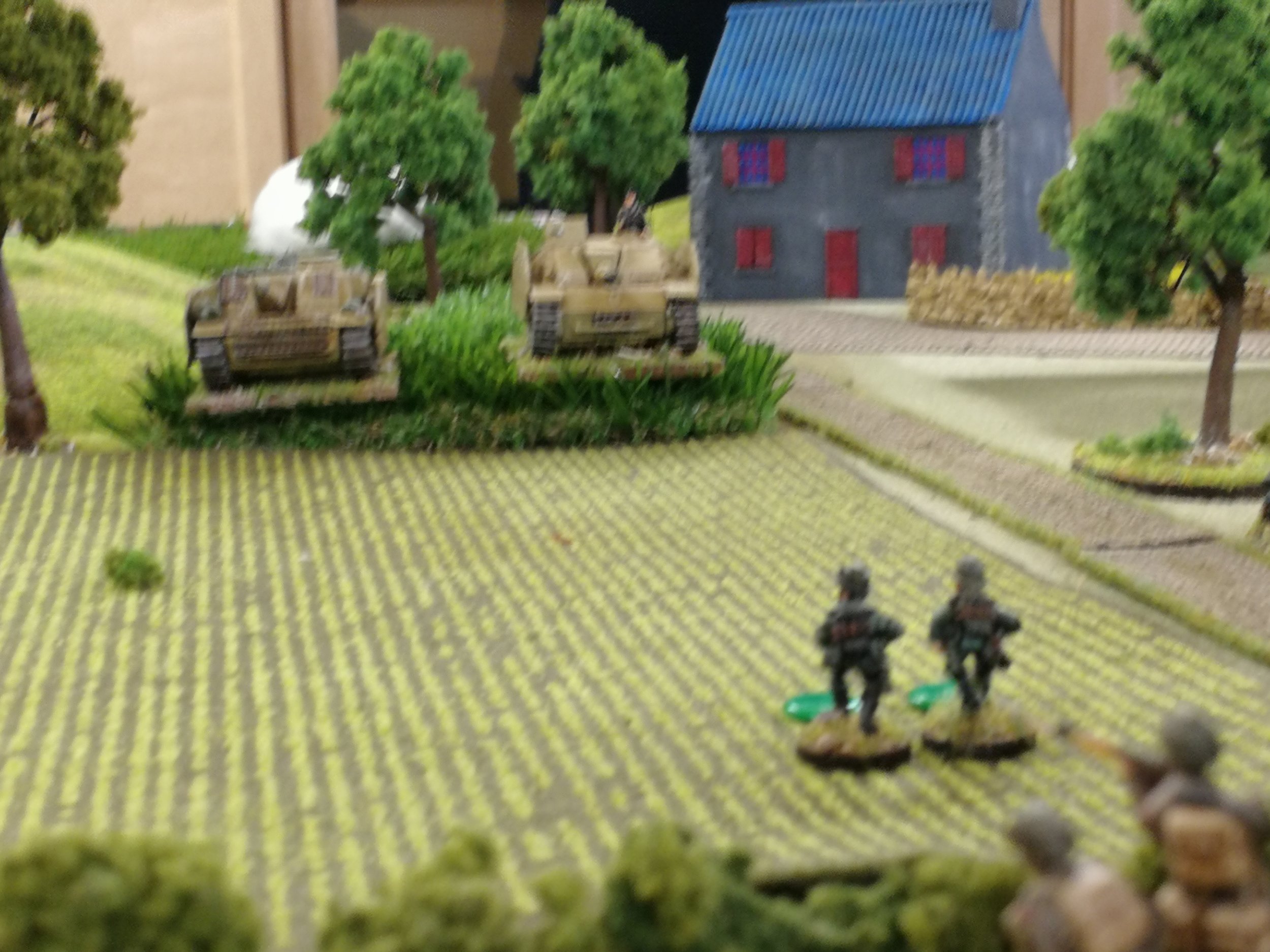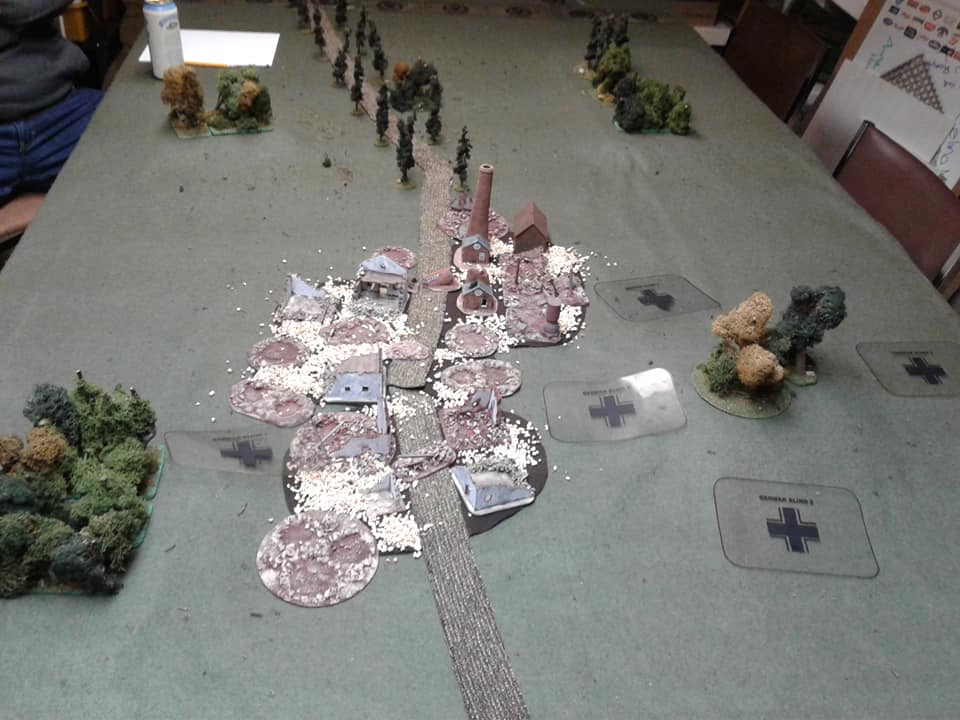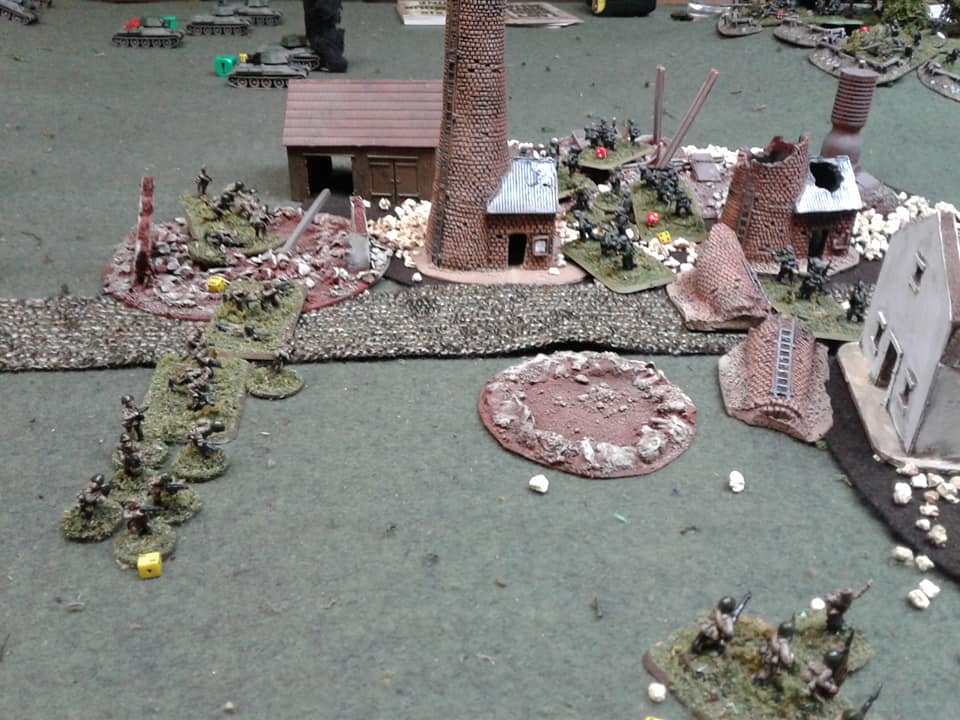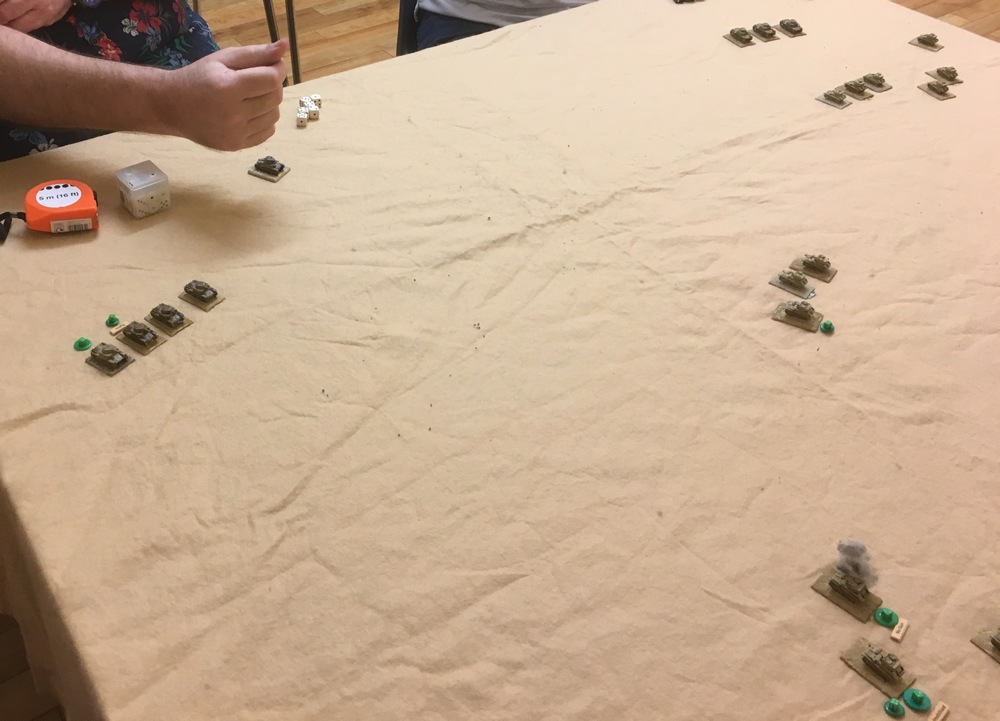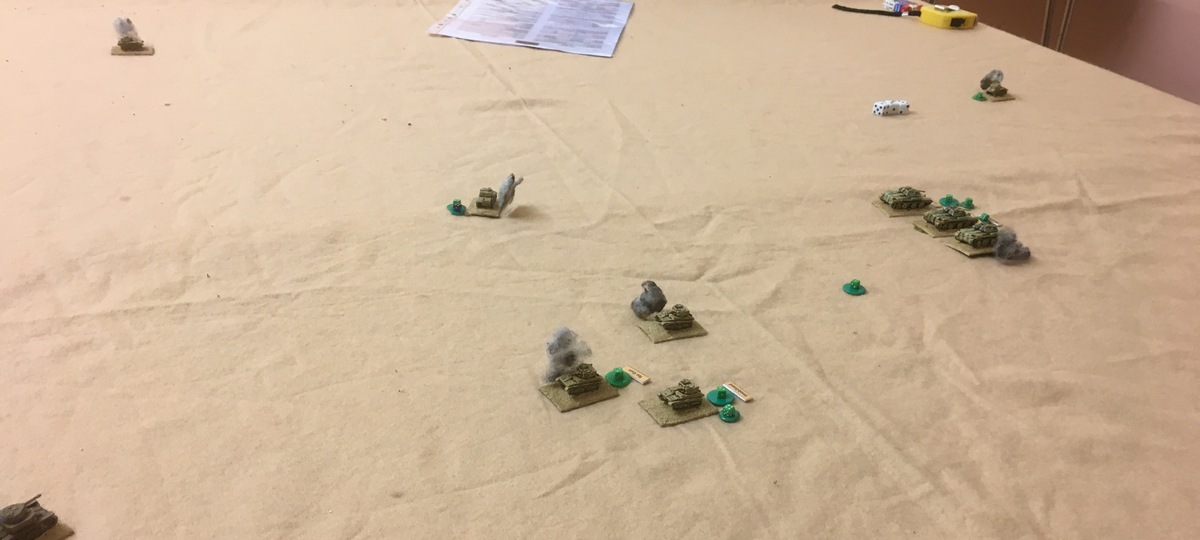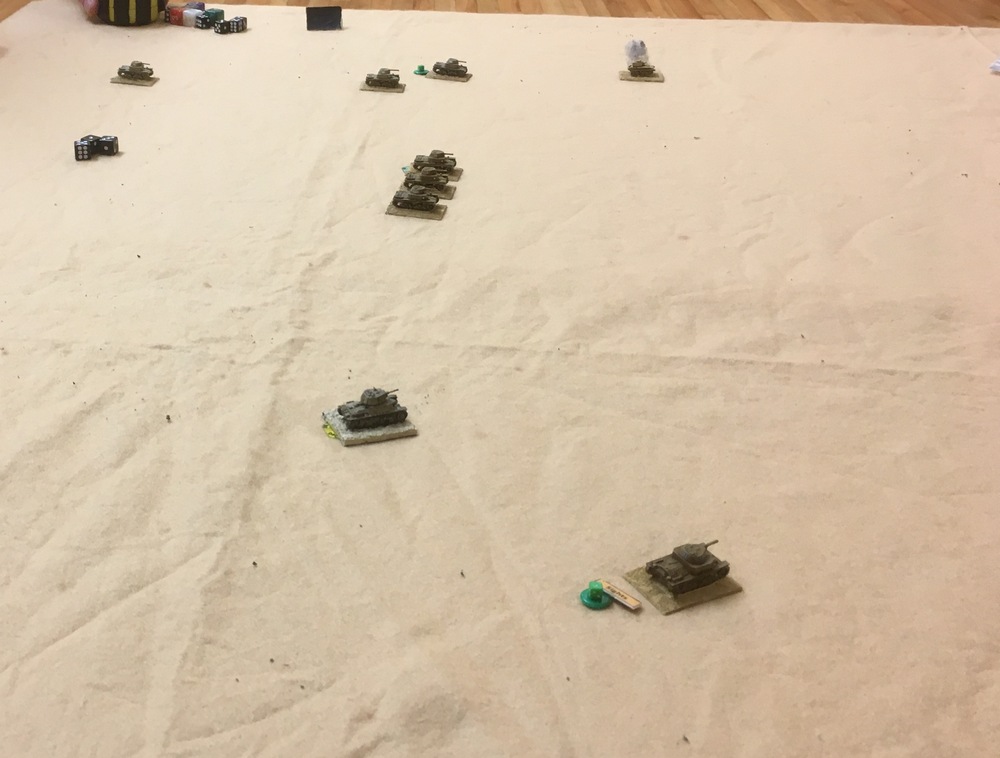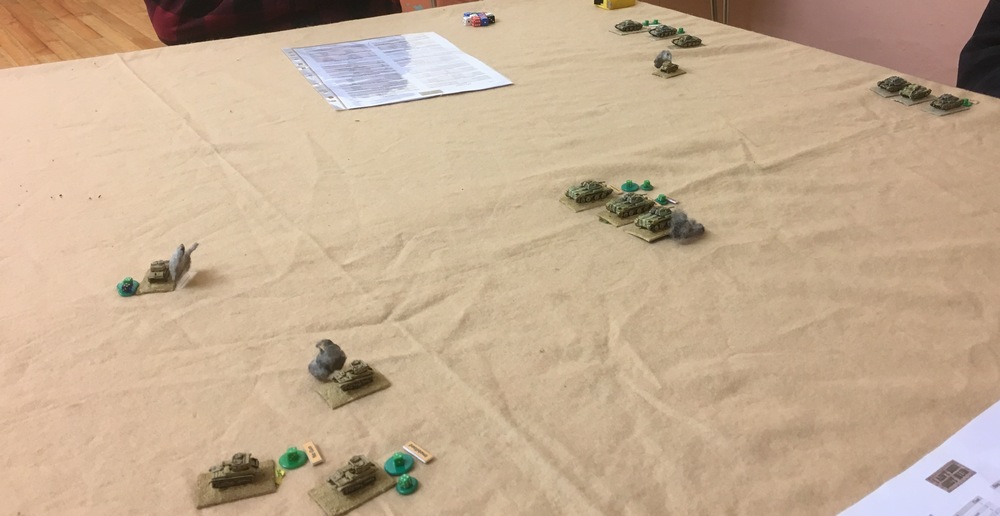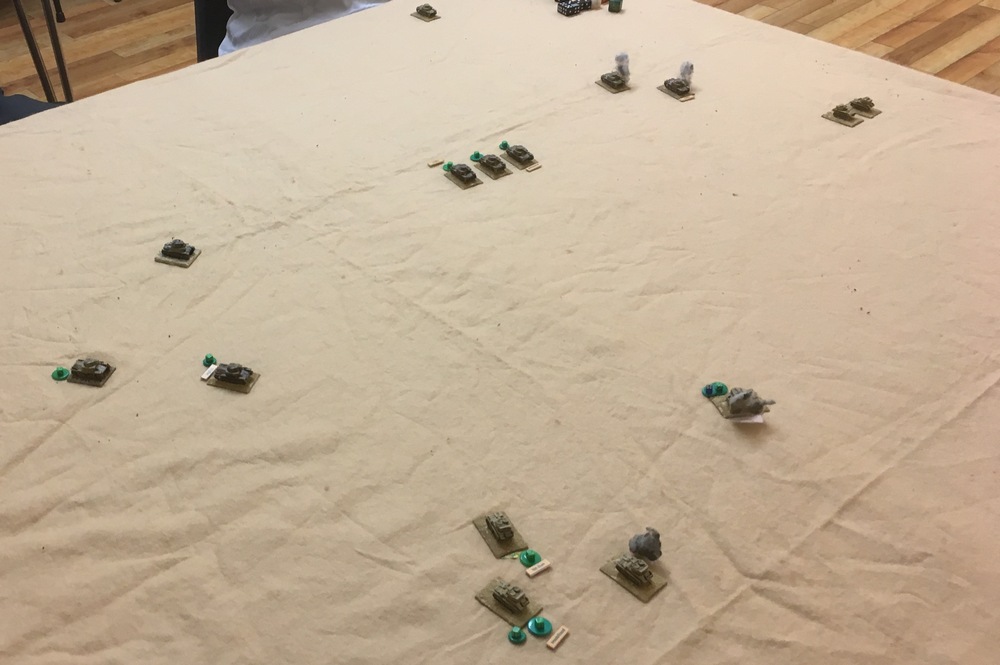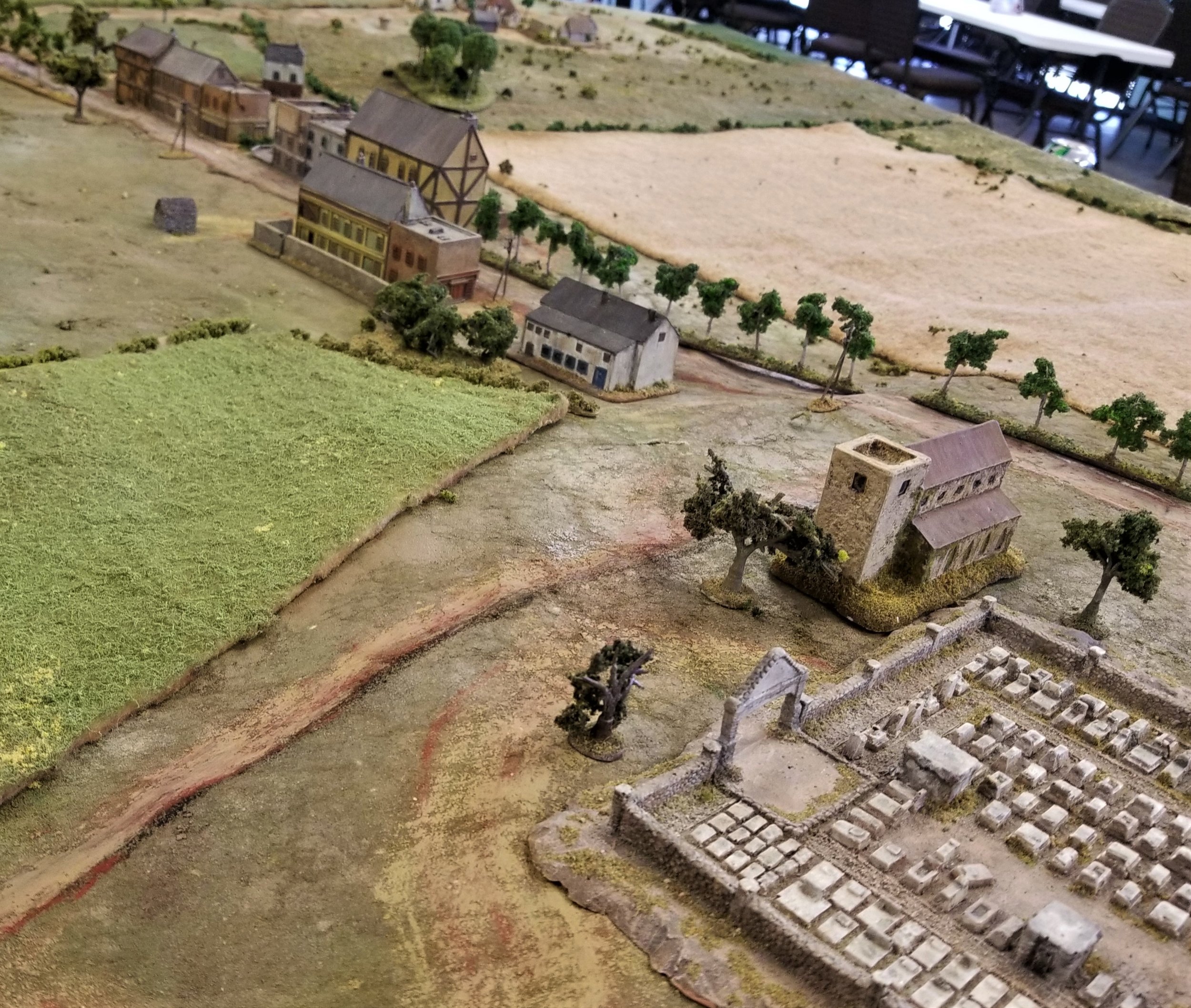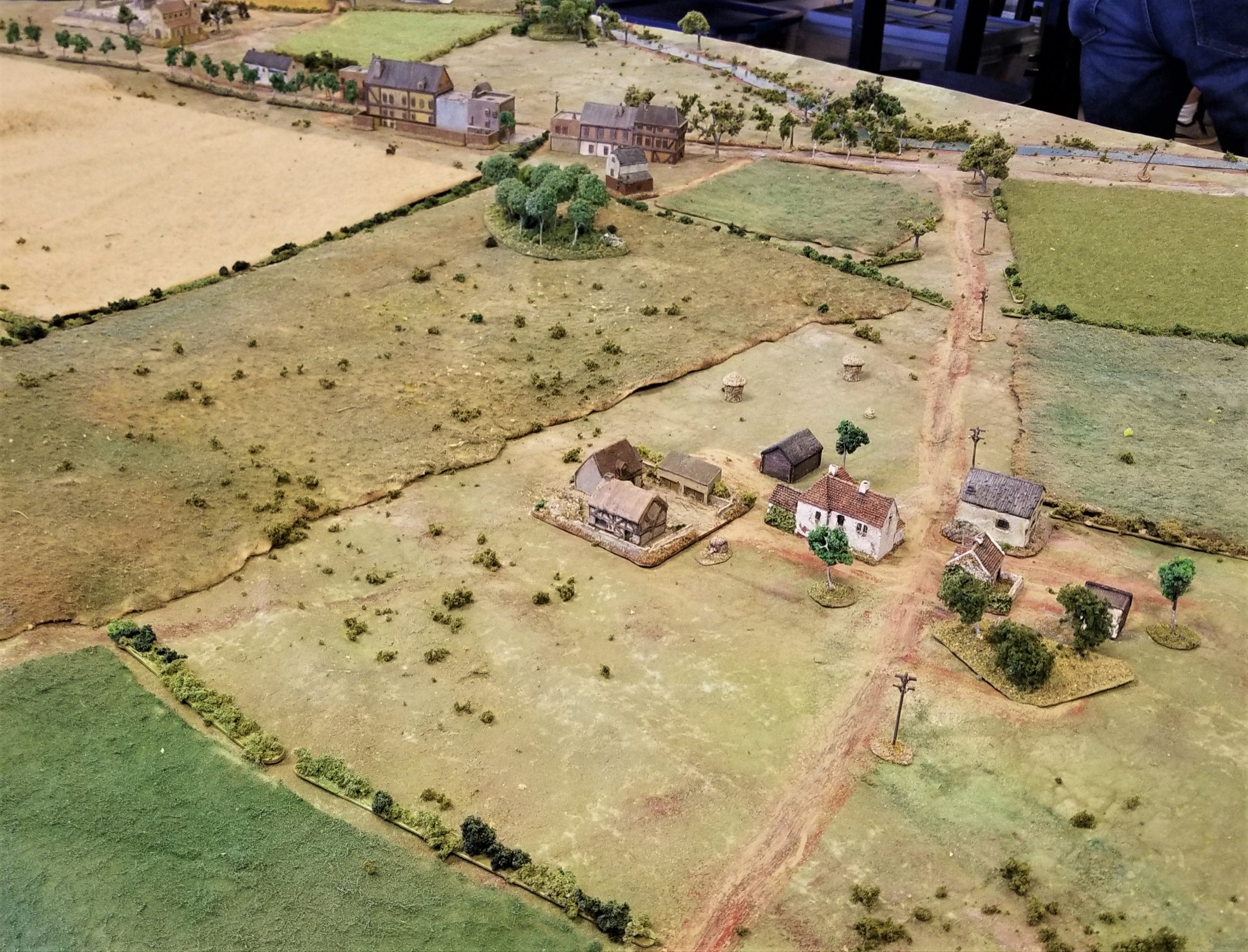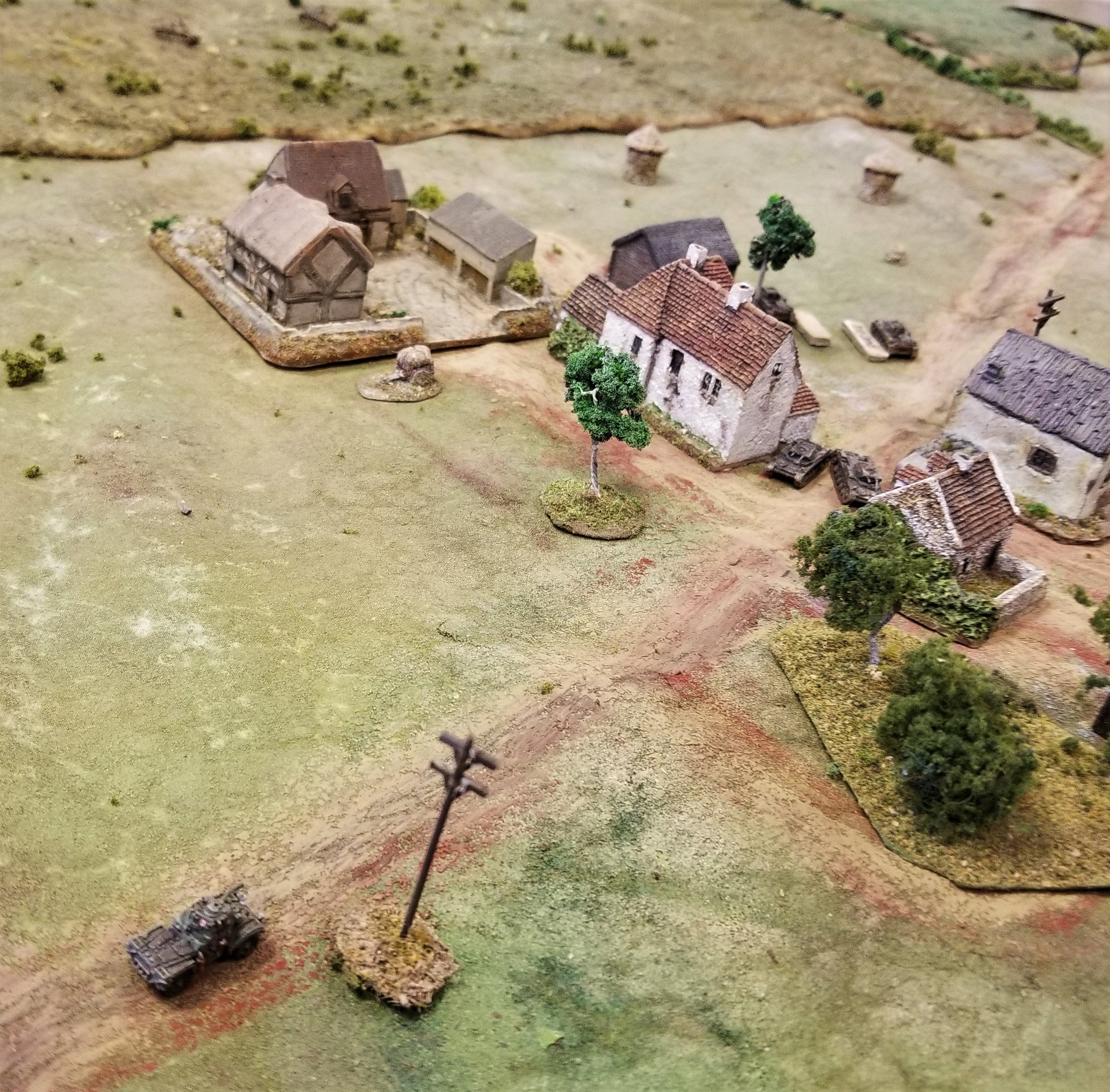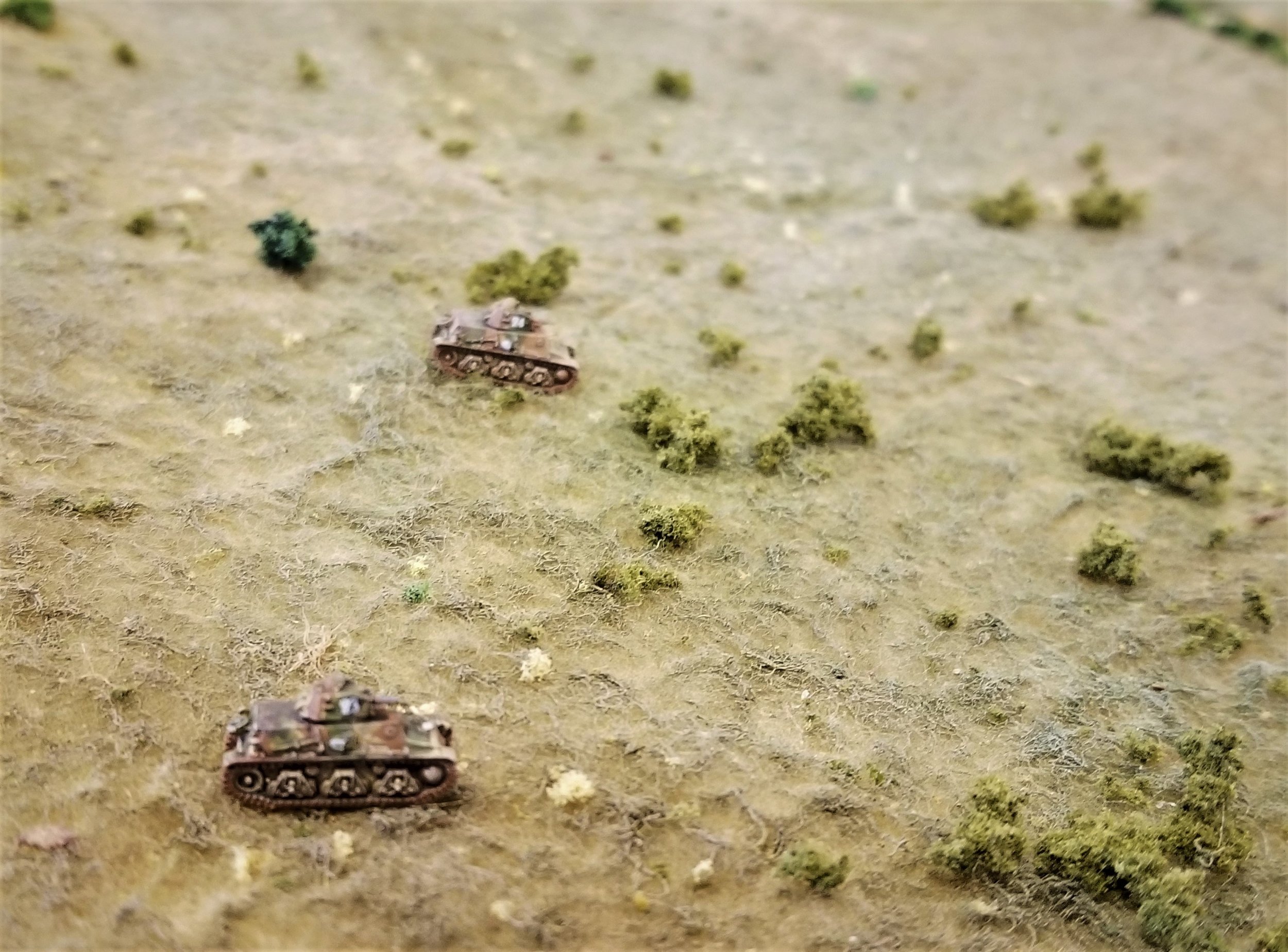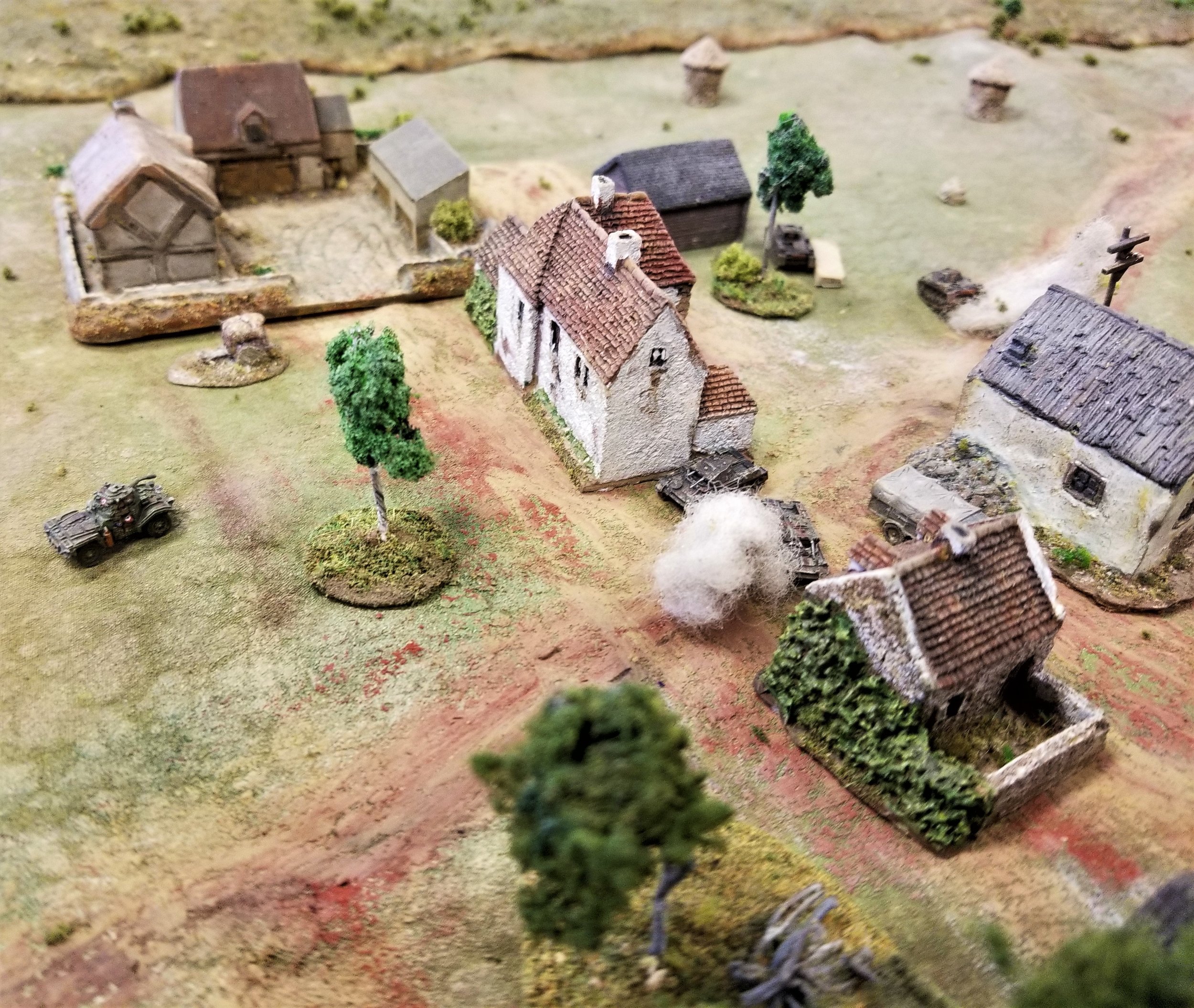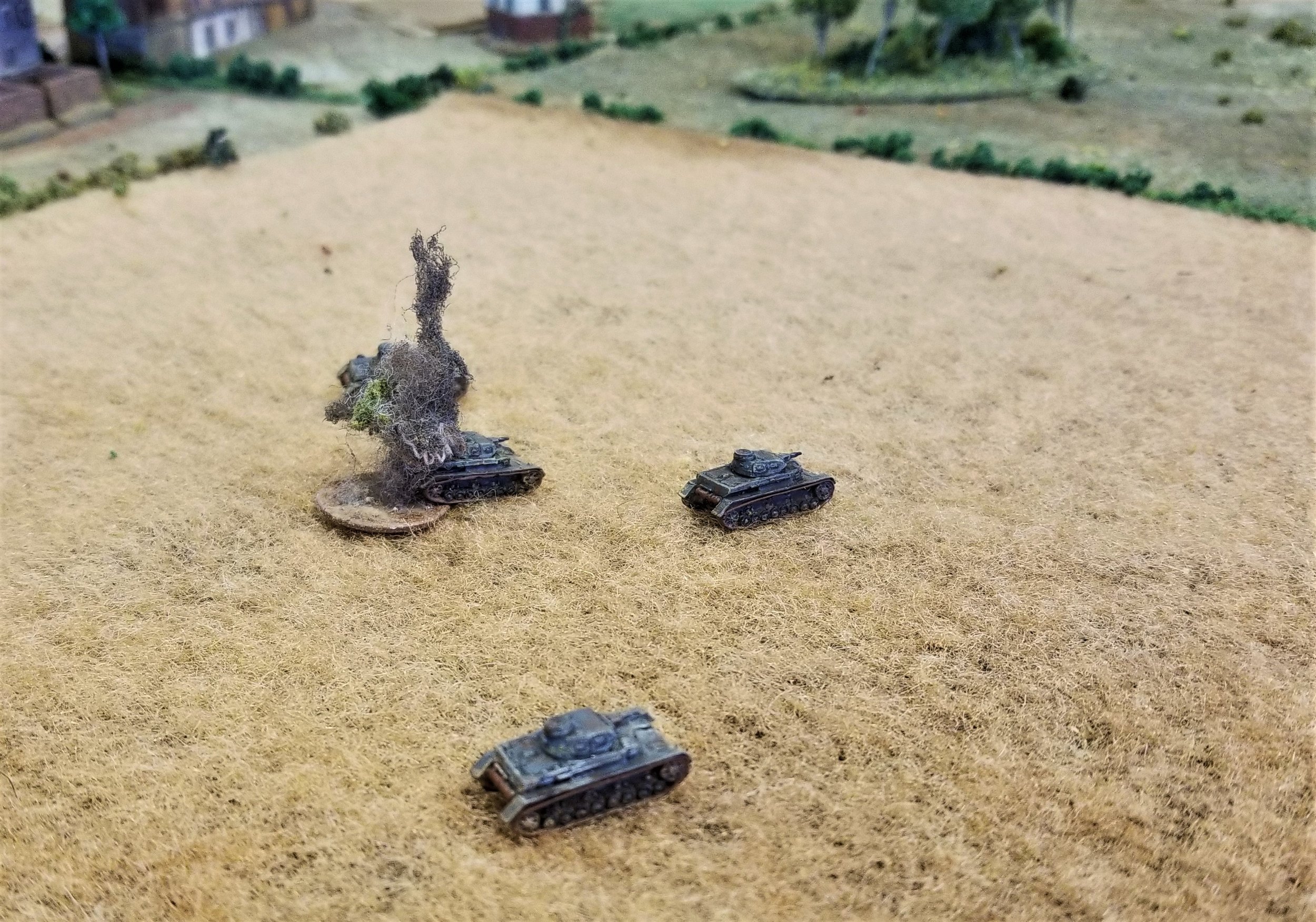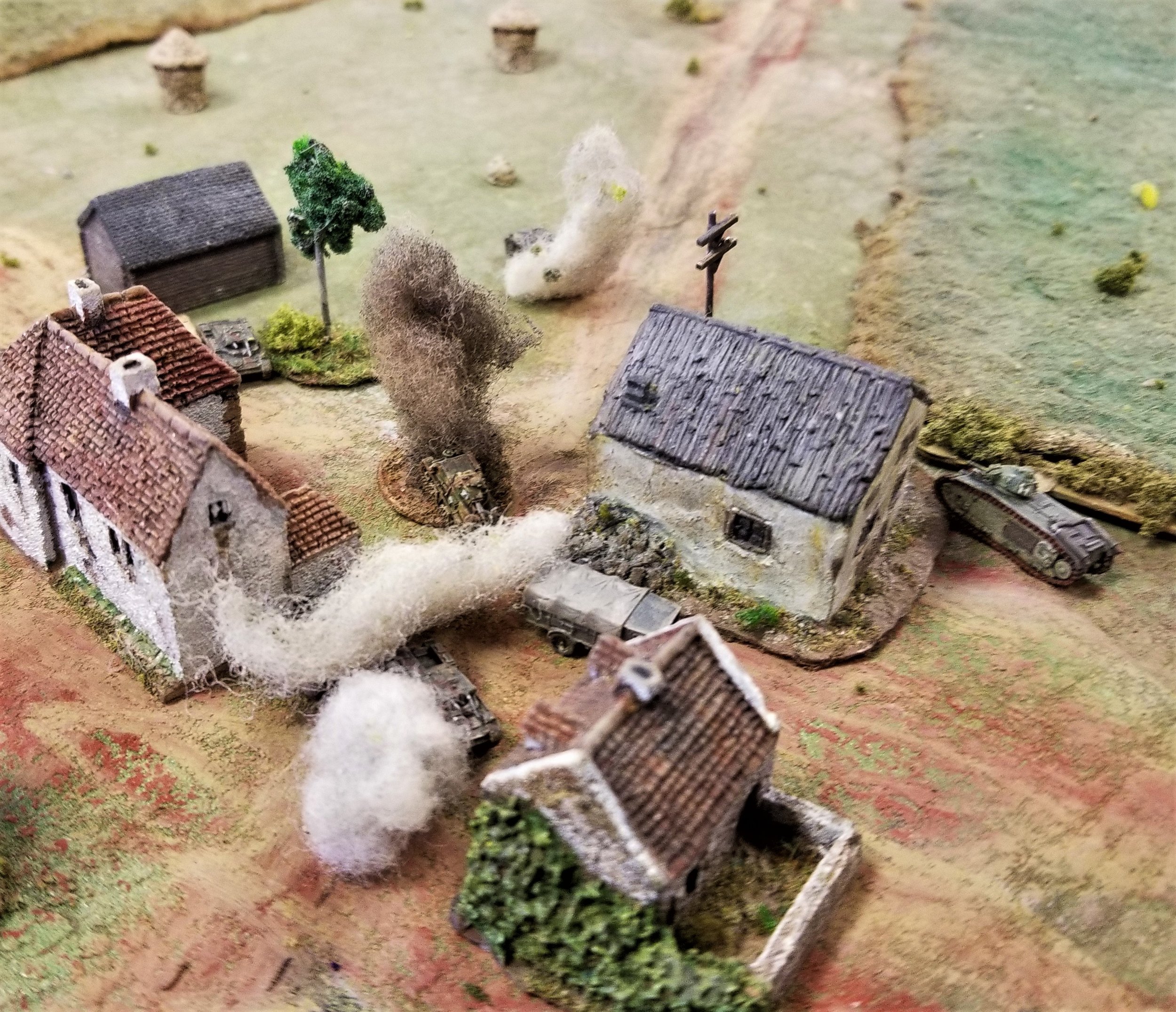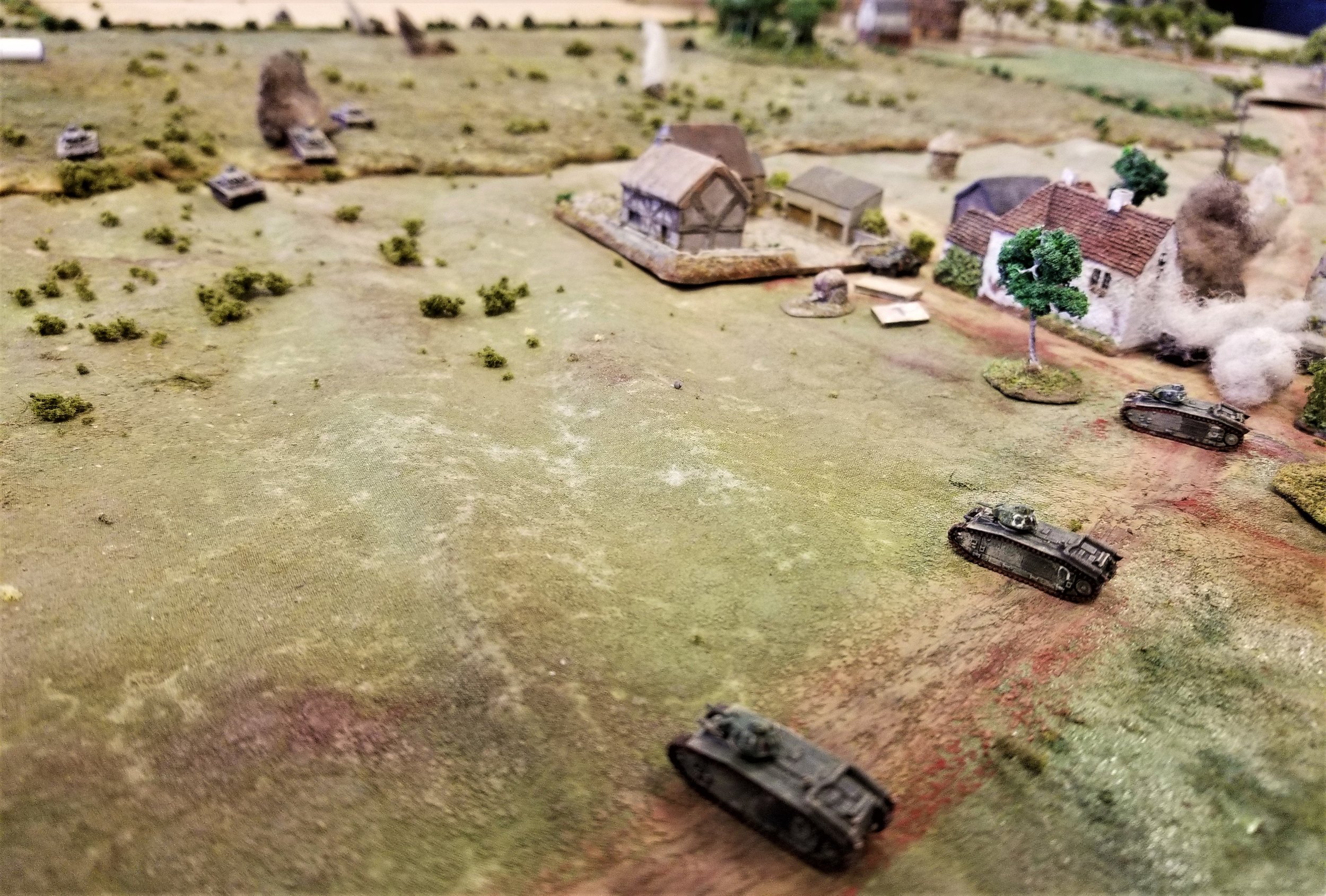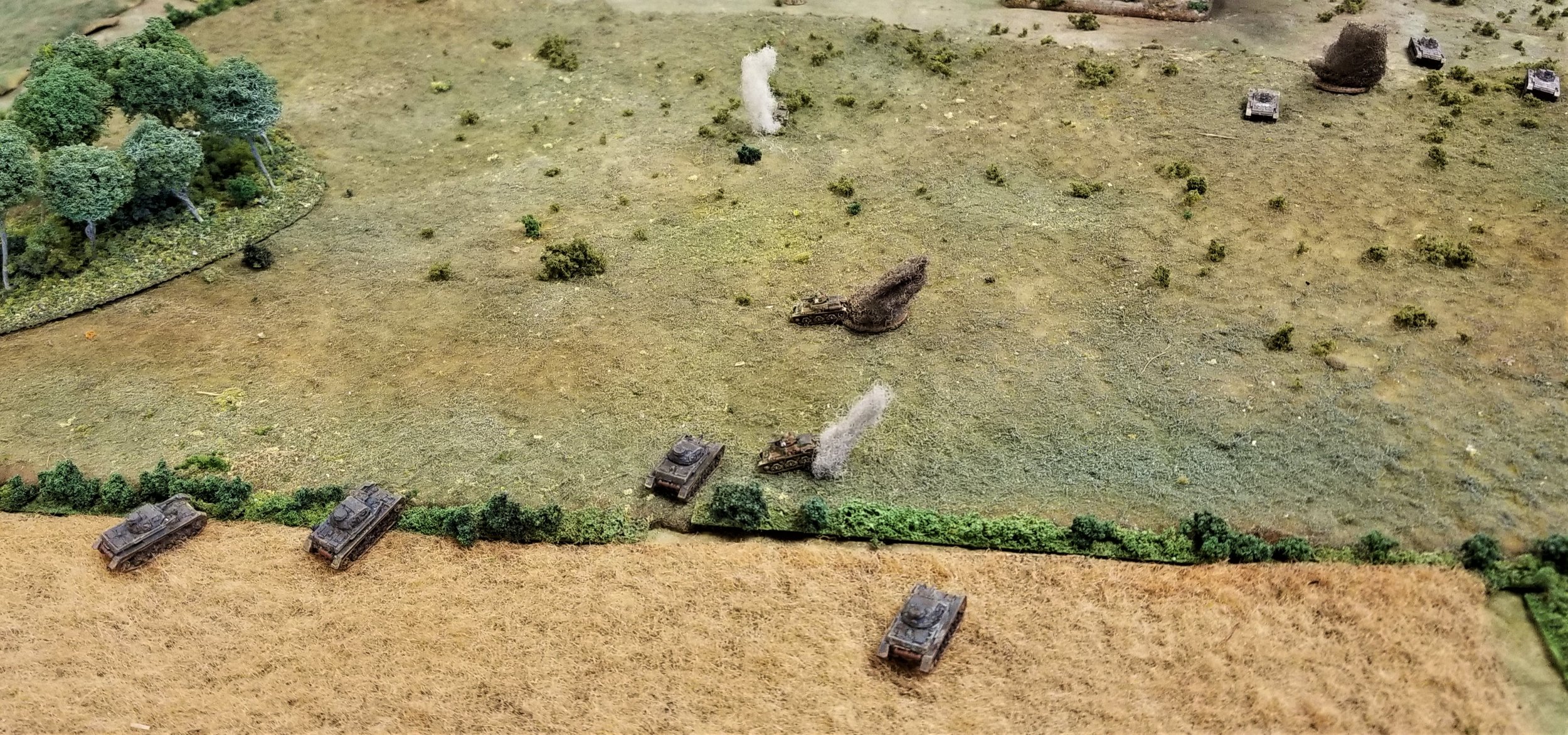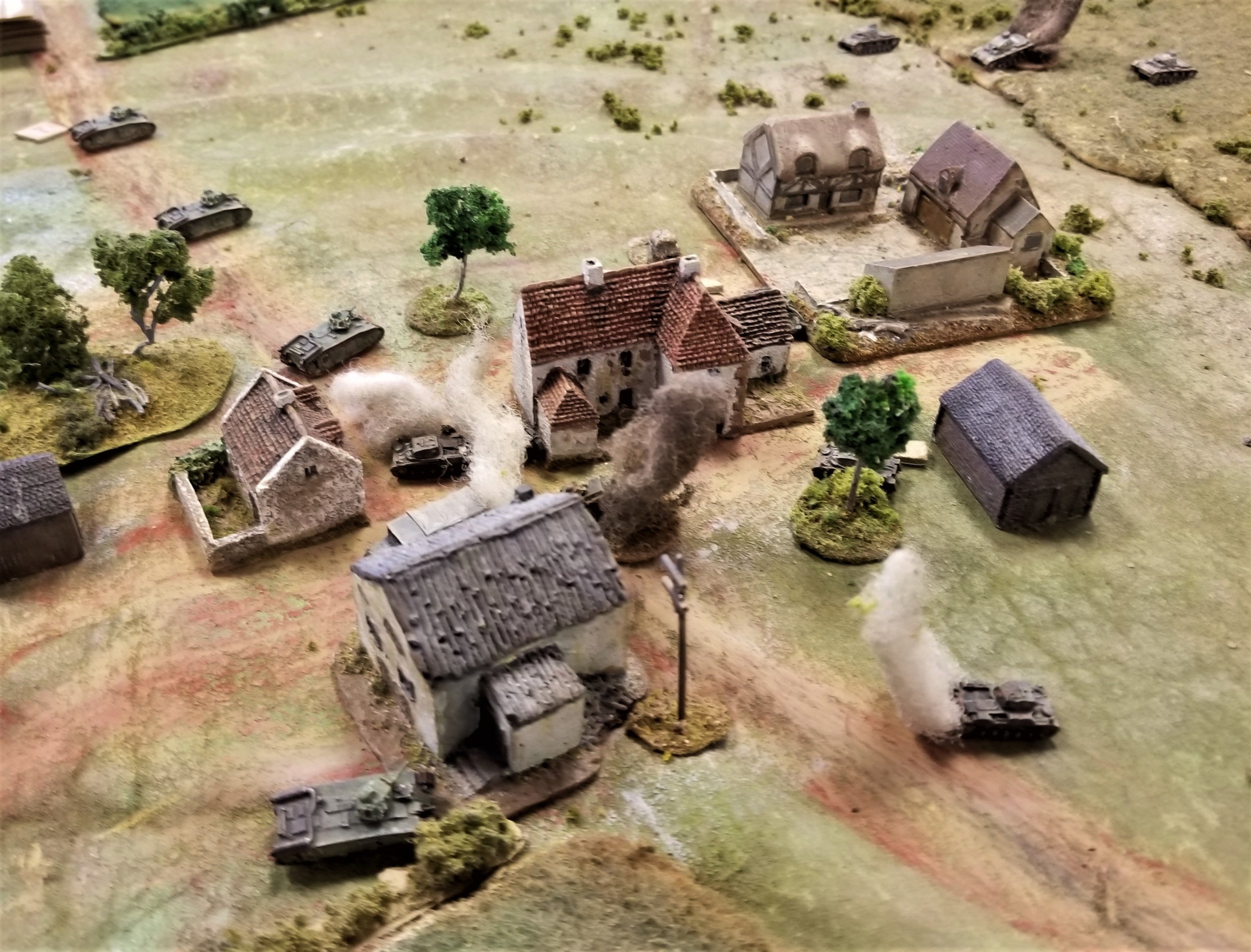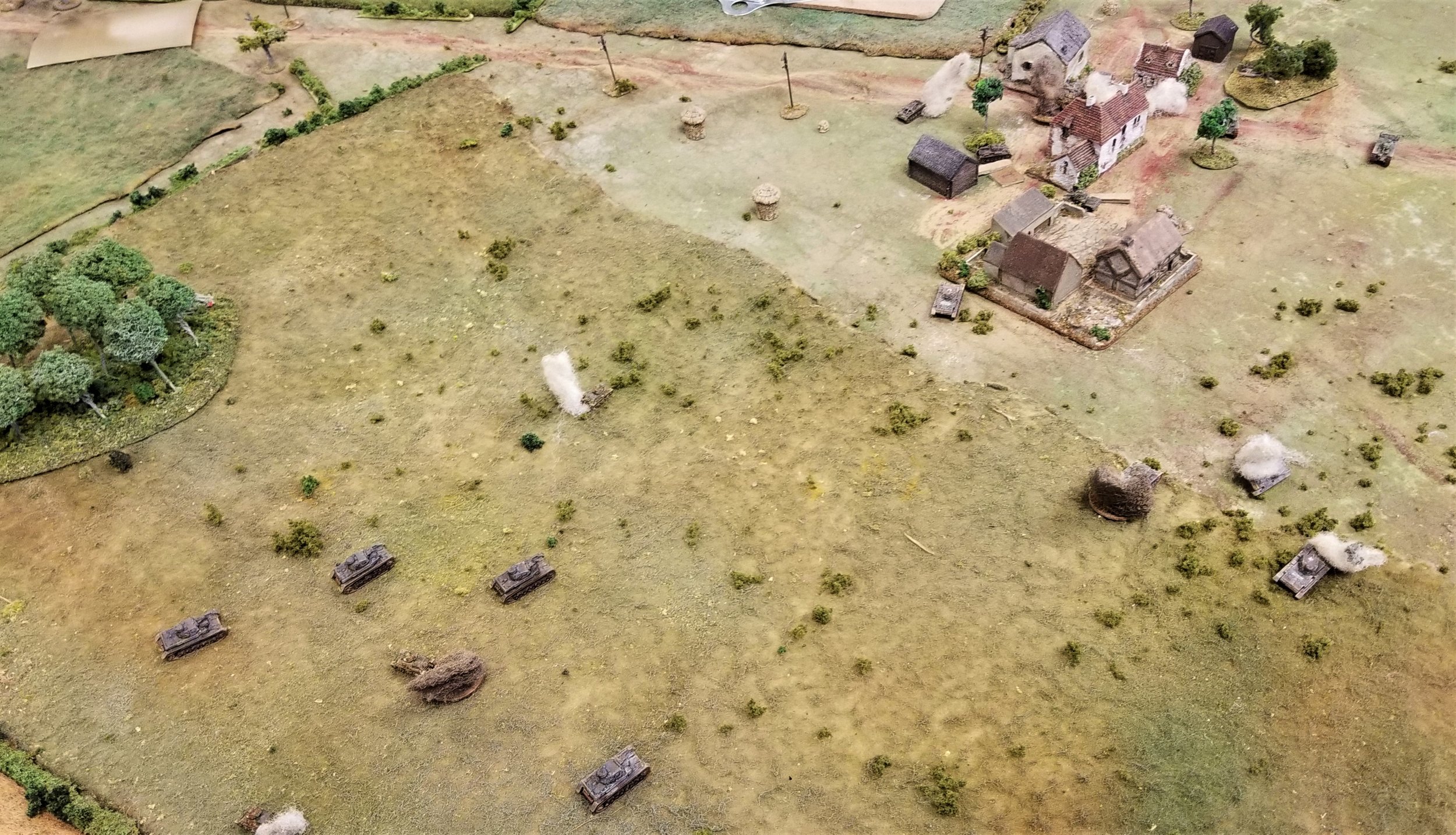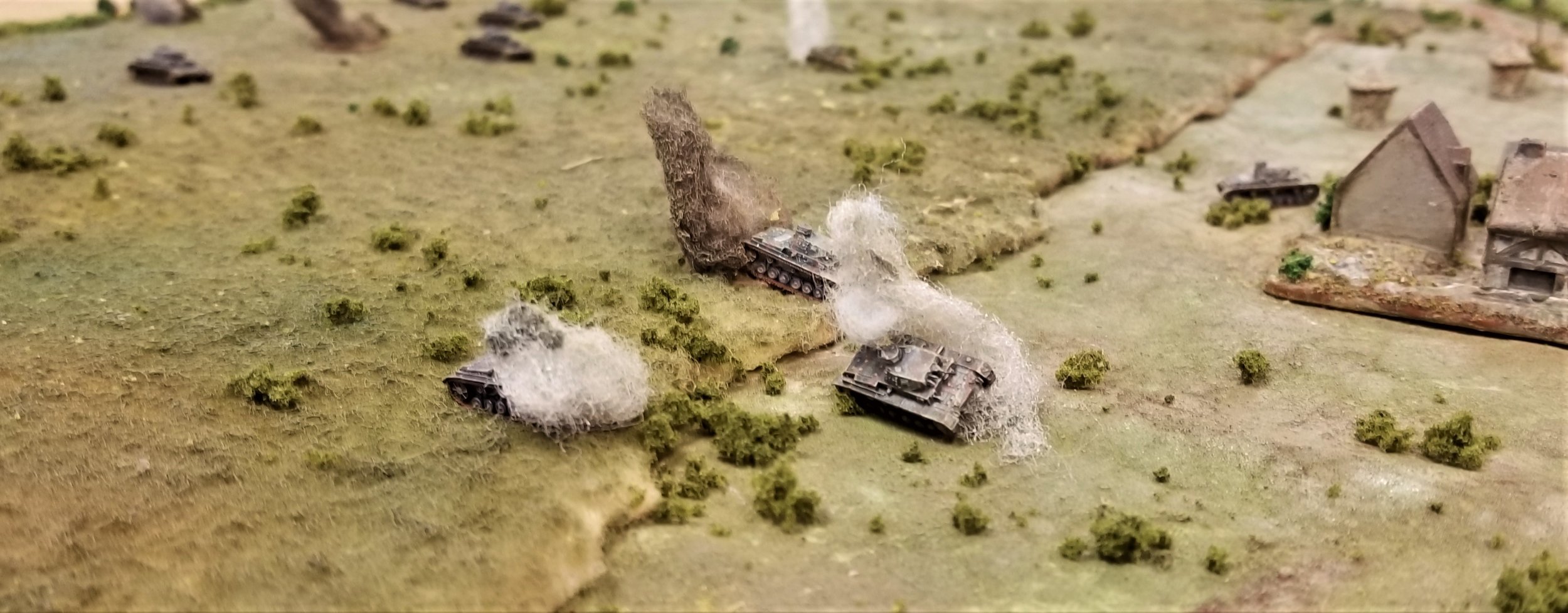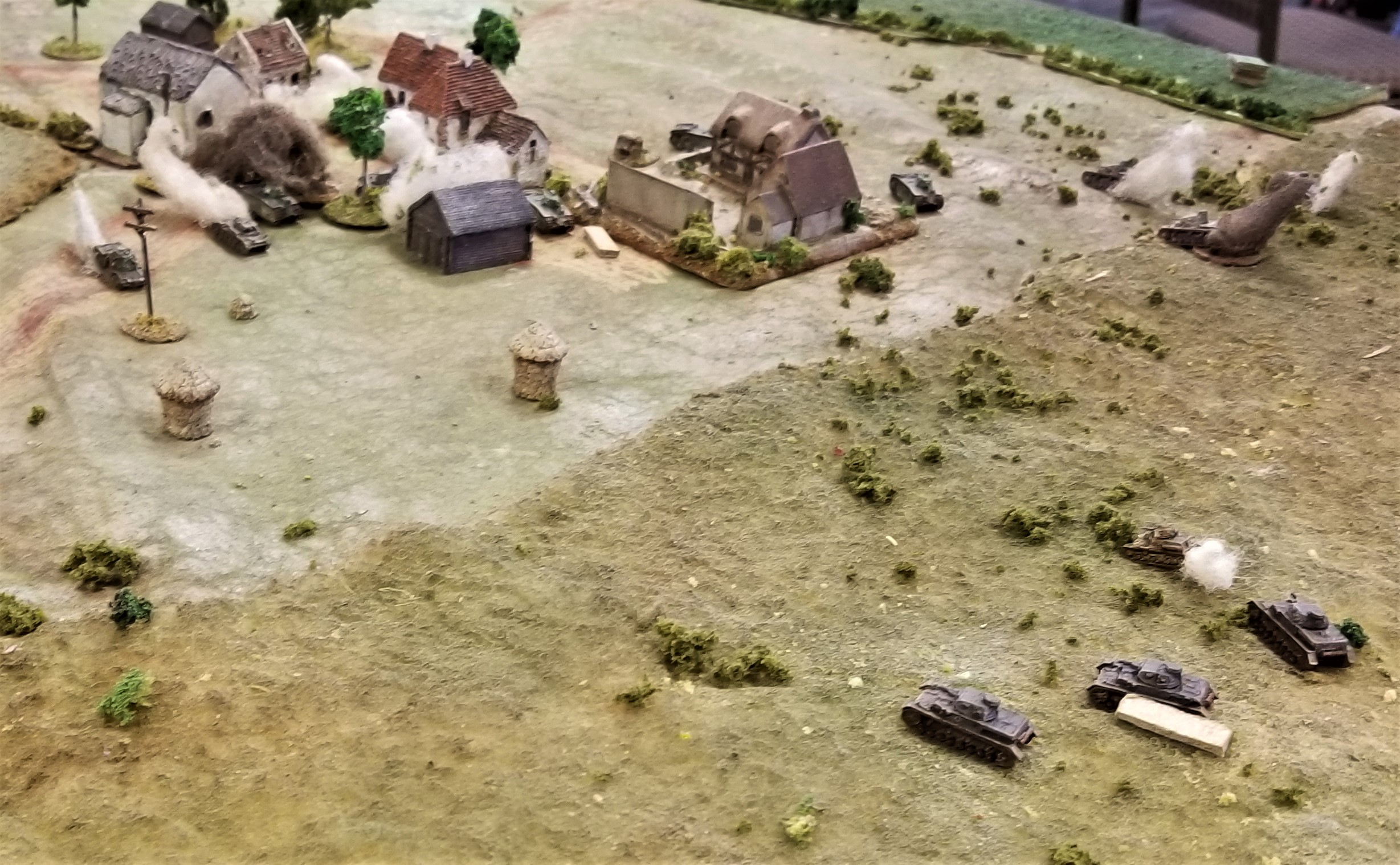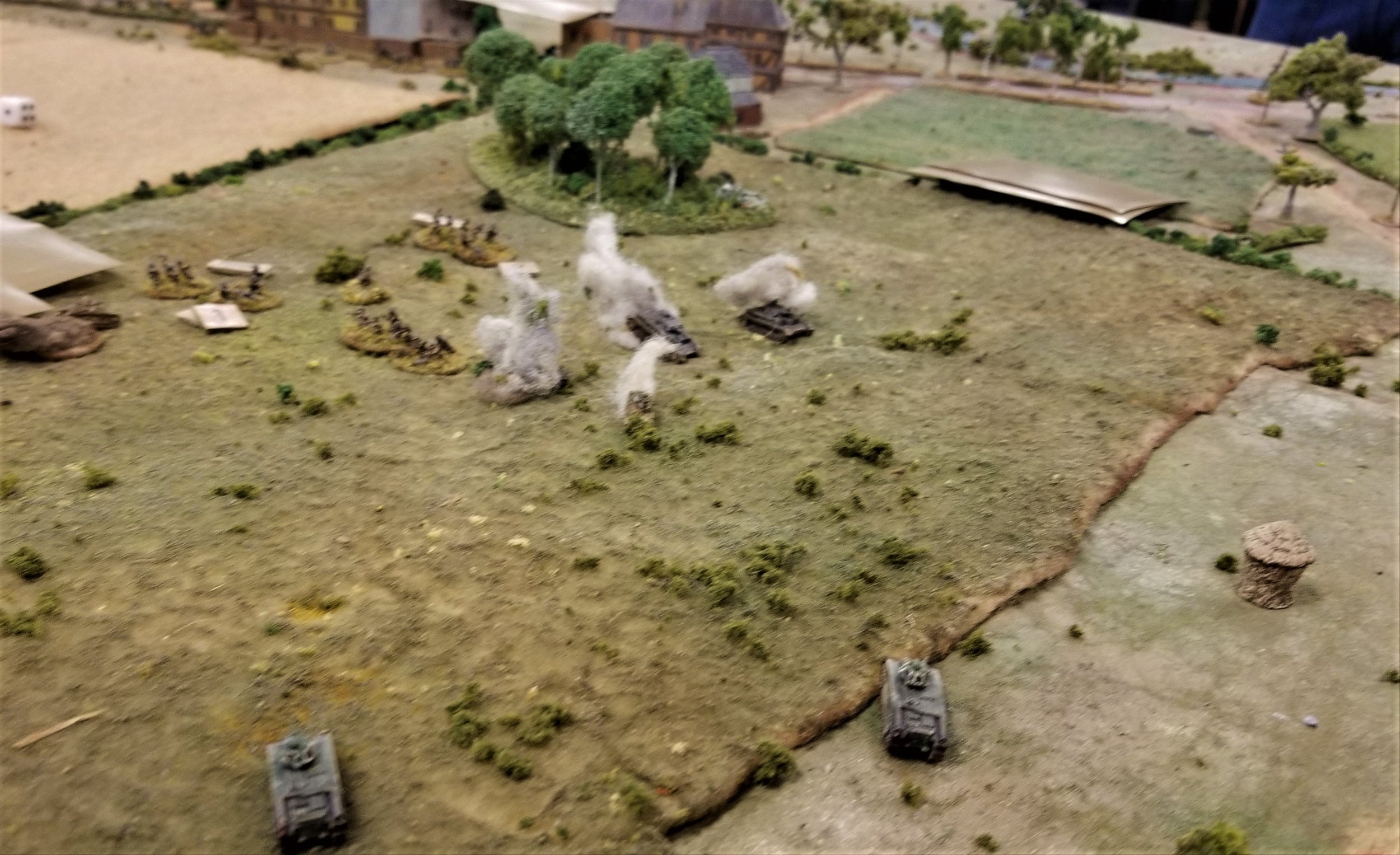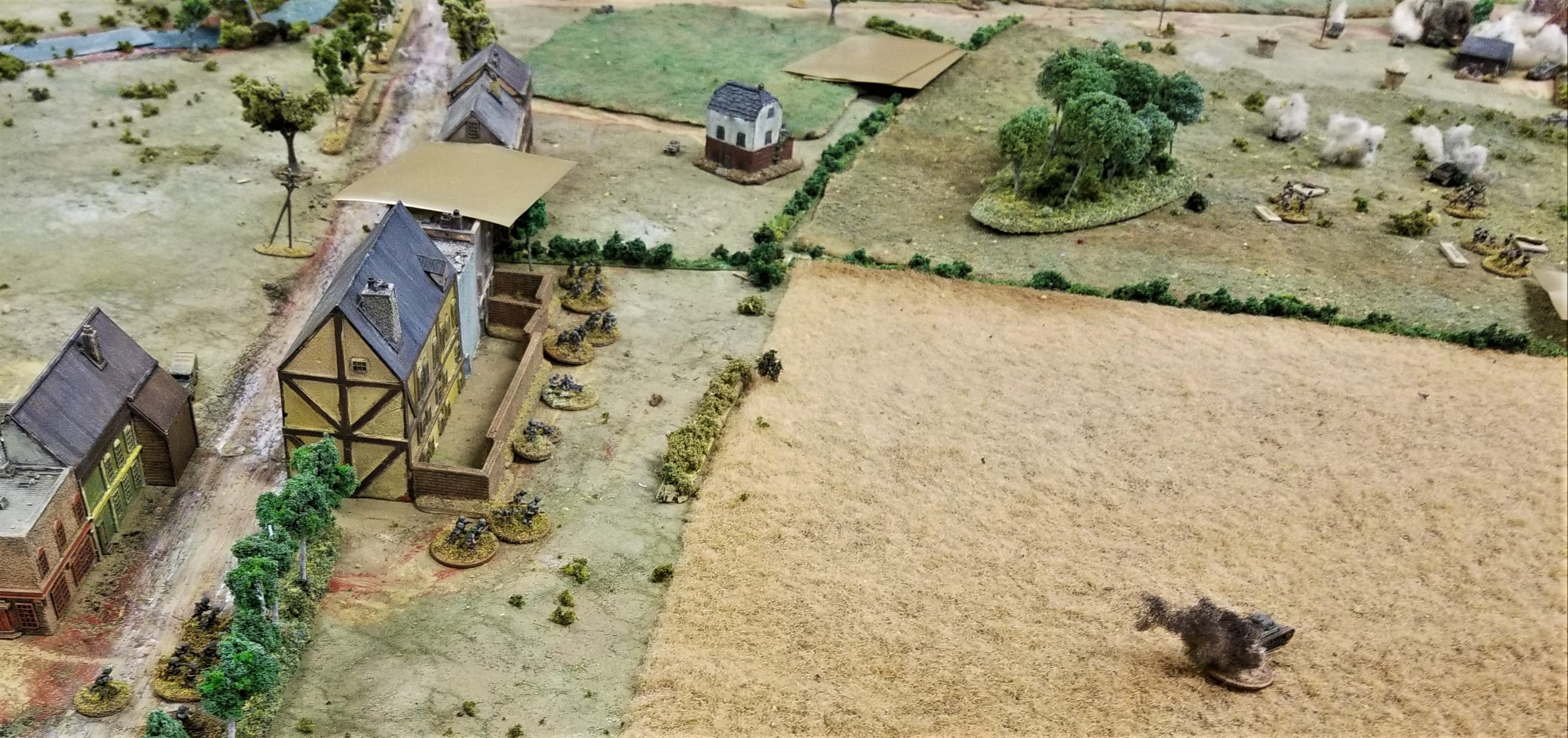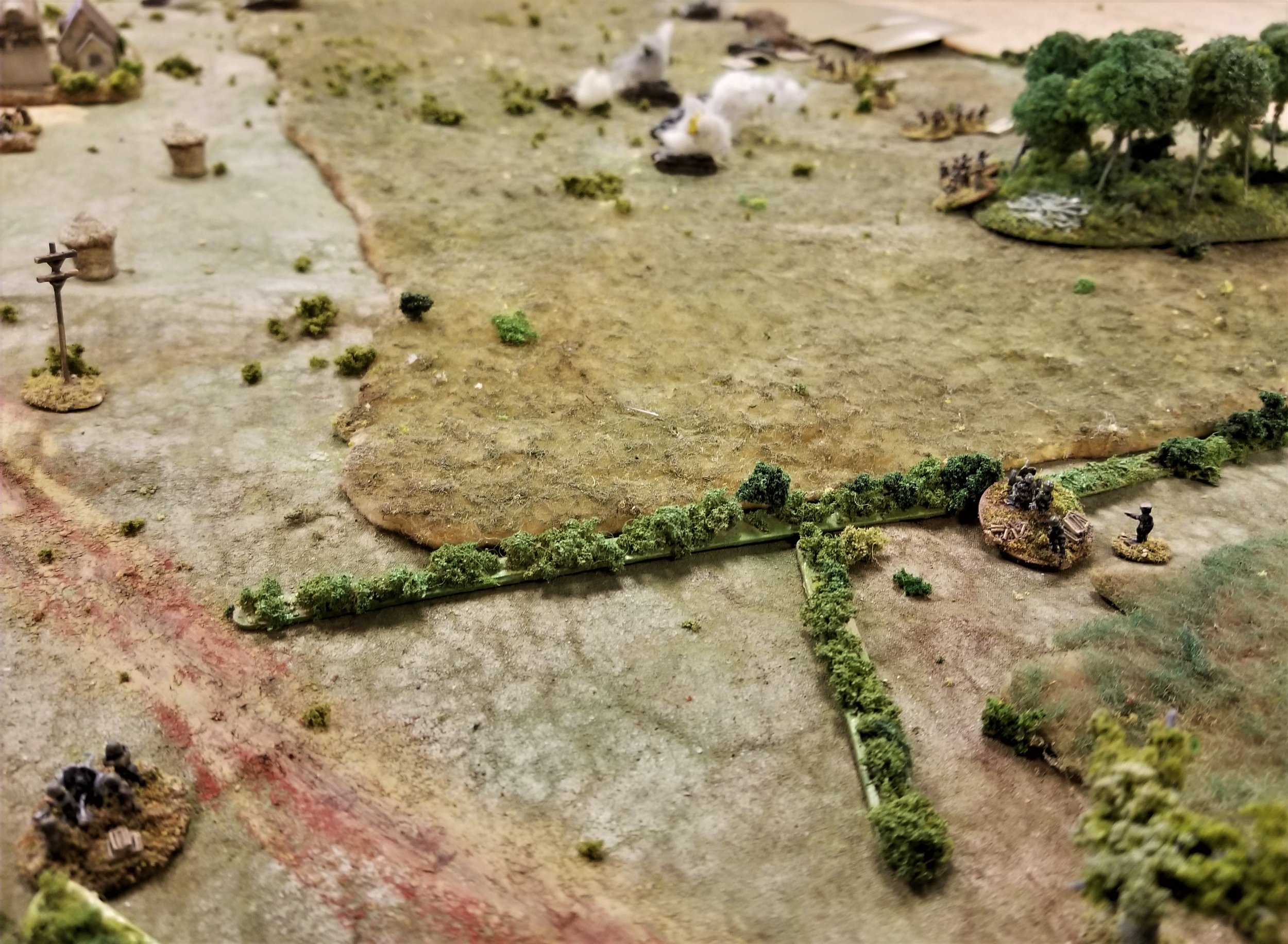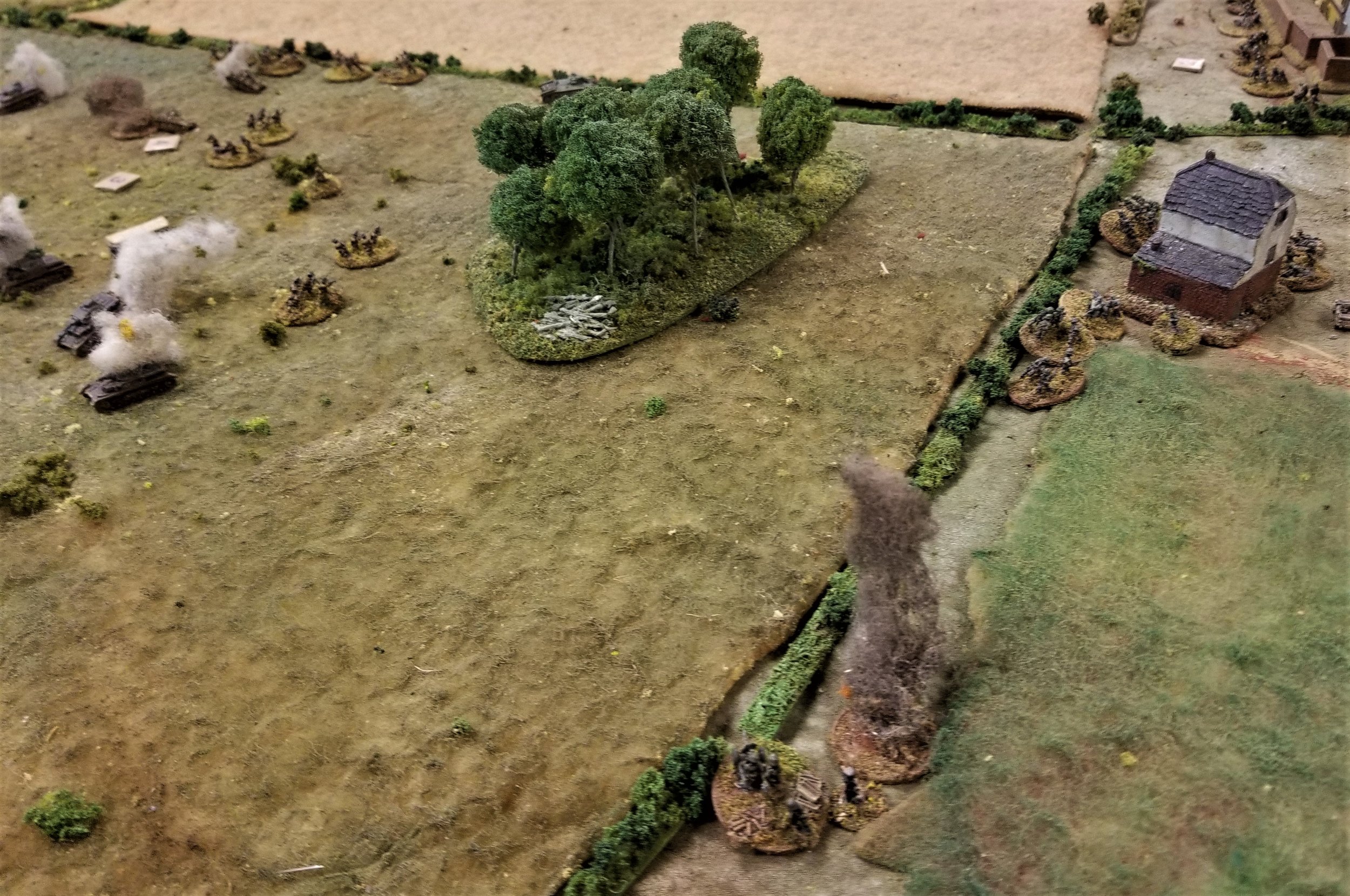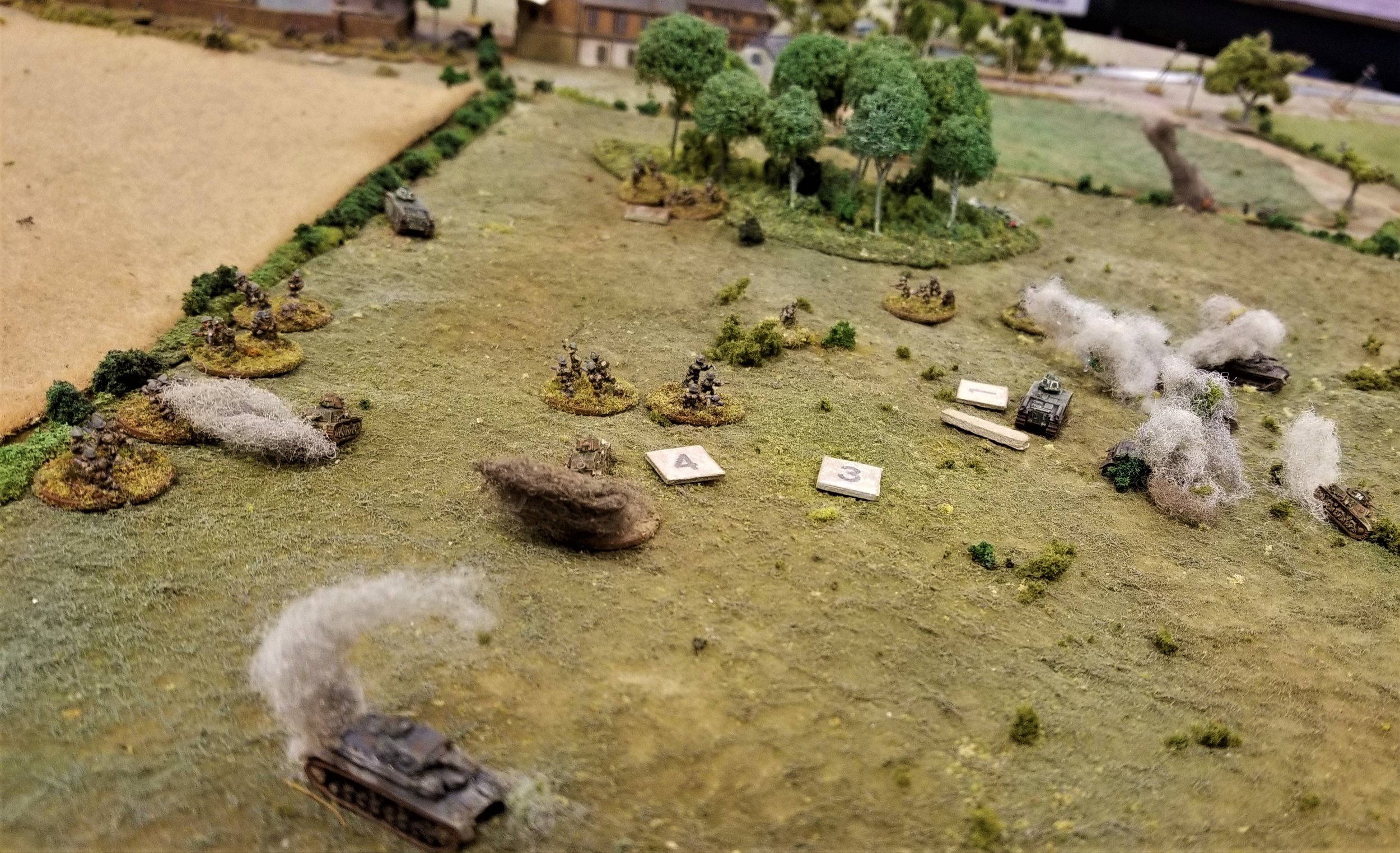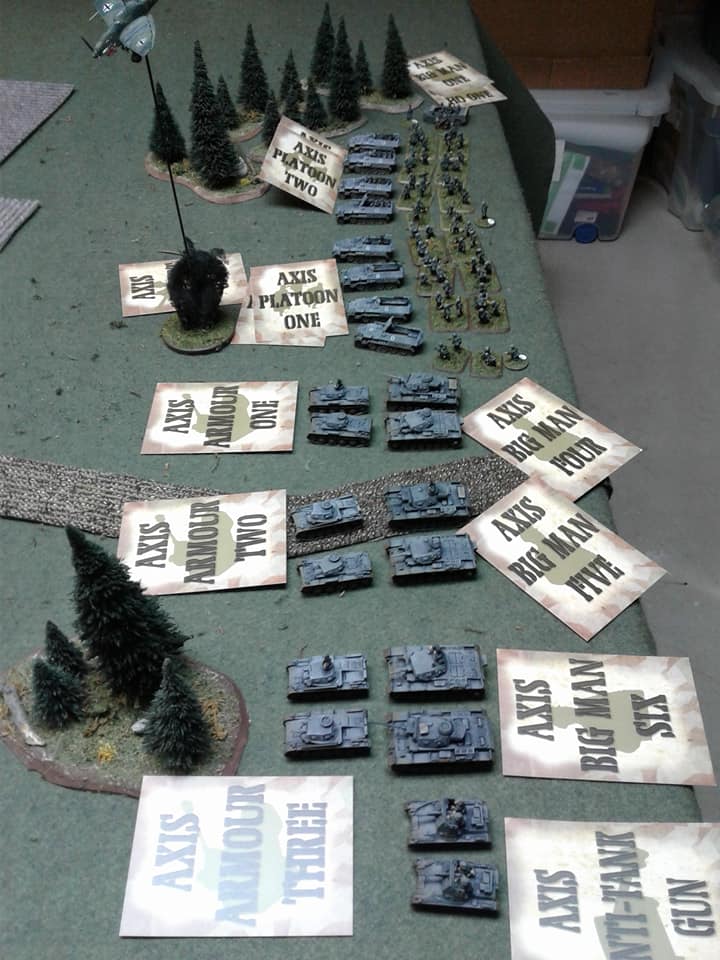We tried a first go at IABSM last weekend, and I think I was a bit over ambitious in picking "The Gloucesters of Zuytpeyne" as our first attempt at the game.
Since there were only two of us and I was the only one who had read the rules, I played the British as well as umpiring, and because I was trying to sort out all the rules in my head I got distracted and made some bad mistakes in deployment. For starters, I forgot the "must deploy within 6" of buildings" provision and had to go back and adjust just as we were starting. Then, after we had started, I realised I had forgotten to write down the location of the MG platoon and one of the Big Men and decided to penalise myself by placing them both with the Company HQ (which, with the Lance Corporal, was in the farm with the French MMG).
So I had one rifle platoon in the wood and field to the north of the Styuver Road, one rifle platoon and the Major in the east side of the village itself, all the MGs and the company HQ plus the Sergeant and the Lance Corporal in the farm by the Noorderpeener Road, and Blinds in the west side of the village and in the field north of the mill. The sniper was in the houses on the south side of the village.
The biggest mistake of all is probably obvious from that description: I had no Big Man with the riflemen south of the town. Second-worst mistake was assuredly leaving the ATR so far away from the village itself.
The Germans advanced a Blind up the Stuyver Road right away. They managed to spot out both of my fake Blinds, but not before one of them had detected the panzers. Several following Blinds turned out to be trucks with the German MMG platoon and one infantry platoon. We popped the advanced riflemen out of their Blind and began shooting up trucks merrily, doing a fair amount of damage to the German MGs. That proved to be about the most successful hour for the Gloucesters.
The panzers had passed through the field to the north-west of the Gloucesters and parked to the rear of the area where they were deployed. The Brits started throwing jams tins filled with a lethal mixture of Marmite and Brasso over the hedge, and the German tanks decided to decamp, driving into the village and starting to spot around like crazy: being Germans, they were probably using their MGs to do the "reconnaissance". Meanwhile, the German MGs, damaged as they were, began making life hell in the little orchard, and the platoon 's senior rifleman started wondering where all of his NCOs were. Far away, alas.
What then ensued was what really put the nail in the game: a run of cards that excluded the British Blinds card (the only way that any troops other than the hapless and eventually defunct 7 Platoon could move, spot, or even reveal themselves) for something like half a dozen turns.
Another German Blind (which later turned out to be their company HQ) entered and began moving toward the mill. Two more Blinds entered on the Noorderpeener Road, stayed far enough away from the Allied MGs to remain hidden, and moved to isolate the advanced rifle platoon. With no Big Man to remove wounds, 7 Platoon gave up the ghost after a few turns of crossfire from what turned out to be the Germans' other two platoons.
The panzers eventually found 9 Platoon and the Major in the village (or they revealed themselves in order to shoot when we finally got the British Blinds card - I forget which) and parked in the village square, machine-gunning the heck out of the buildings on the east side. The infantry, not able to do much damage to the tanks, wondered where the hell the Boys rifle was.
Having eliminated 7 Platoon, the German MGs and their supporting grenadiers moved into the village, making for the bridge. The British sniper opened up at this point, taking a number of shots at one of the German Big Men but never managing to inflict more than a passing flesh wound. The riflemen of 9 Platoon crocked a few more MG gunners and started taking apart another of the German infantry platoons which had made its way to the far side of the village, debussed, and started walking in.
Since the panzers' MGs were killing 9 Platoon section by section, the Major decided to have one section rush the tanks. Of course, the luck of the cards intervened and the panzers' card came up again before they could close in and start putting Mills bombs in the fuel tanks and whatnot. Some intense shooting later, and 9 Platoon was down to its last section.
The company HQ and the MG platoon had moved out from the farm, but the Germans came up and started shooting out the tyres of the trucks before they could make it to the Cassel Road. The HQ rifle section got almost as far as the village before they and the Boys team became casualties of, of all things, a passing Stuka attack. The Stuka came back again almost immediately and dropped a bomb smack into one of 9 Platoon's buildings, which blew a lot of dust on the Major's newly polished shoes (oh, and killed a rifleman or two).
The British MG platoon did manage to unload without to much damage, and they proceeded to go to town on the advancing Hun. They wiped out the (already damaged) German heavy weapons platoon and began chewing pieces out of the infantry platoon in the town, which was already getting hit hard by 9 Platoon. Sadly, however, more Germans came up and managed to eliminate one Vickers team after another.
At the point that the MG platoon headed south, leaving me with the French MG section (which had been reduced to one die by then) and one section of 9 Platoon and the Major (holed up in a farmhouse and facing the wrath of three Panzer IIs) plus the so far ineffective sniper. I decided to call it a day.
End of the day? I have a feeling I didn't get all the rules right or even close, but I think we got the basics correct. But between my bad deployment and the horrendous disappearance of the British Blinds card, it was much more of a walkover for the Germans than it should have been.
Jan Spoor








